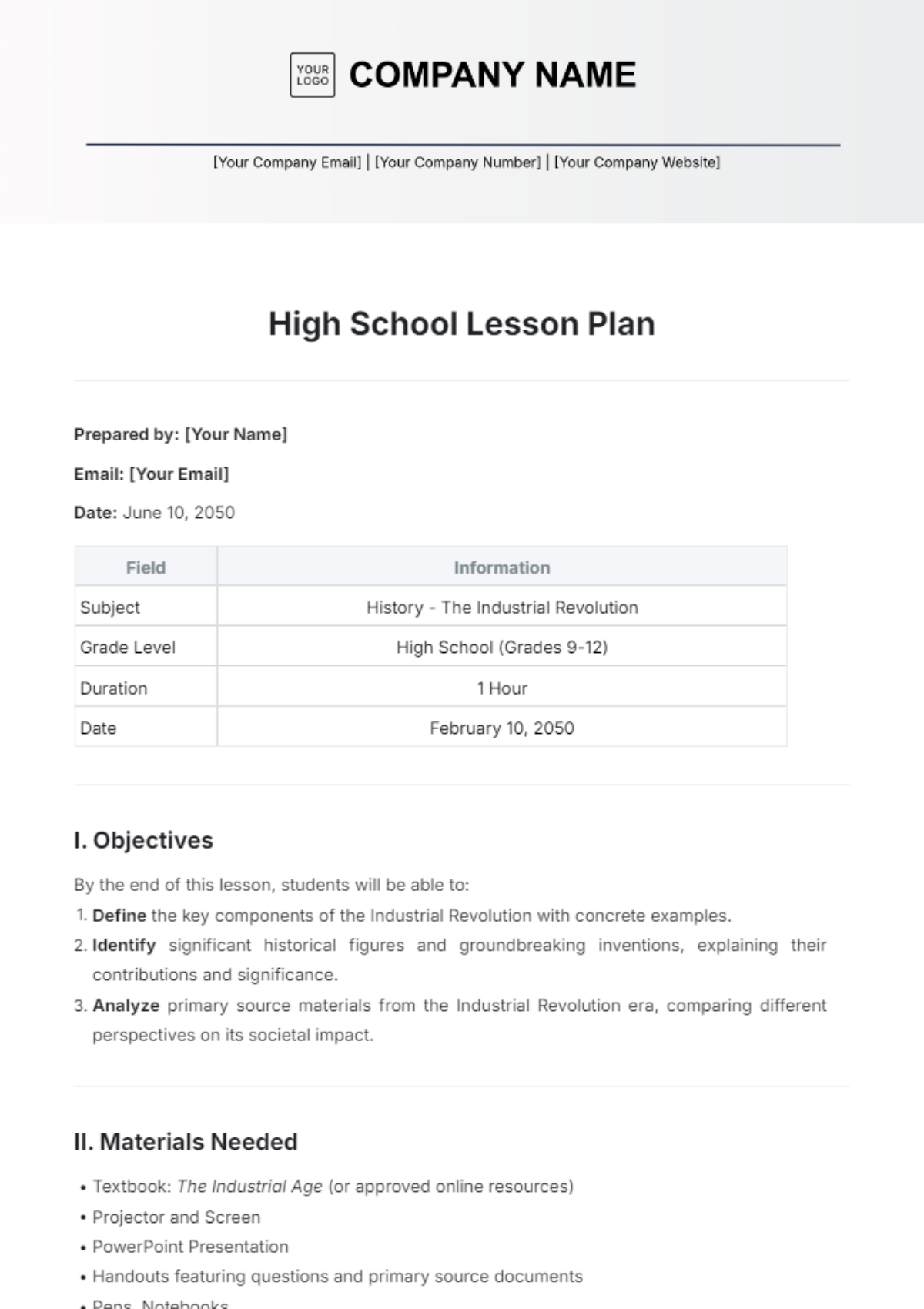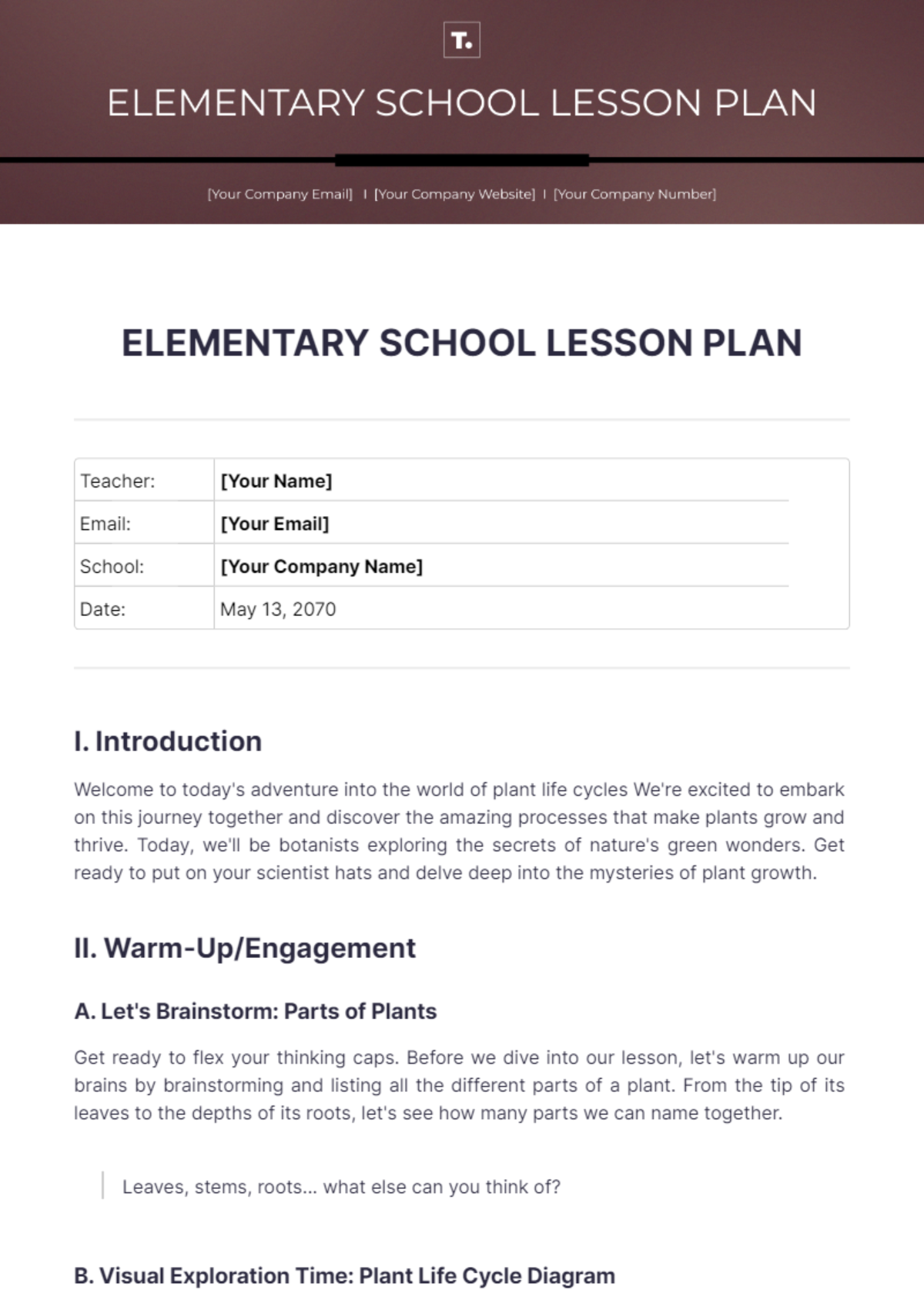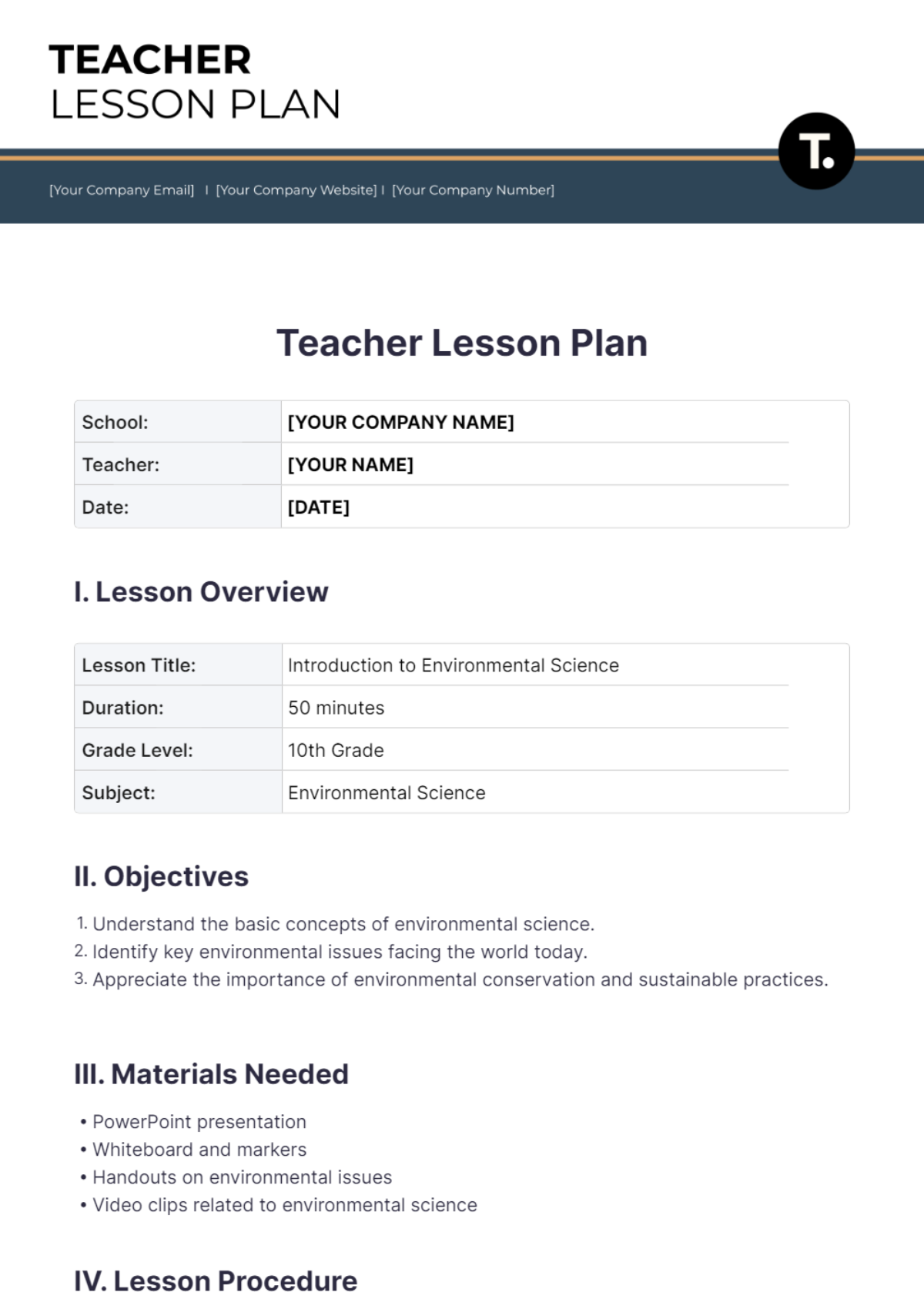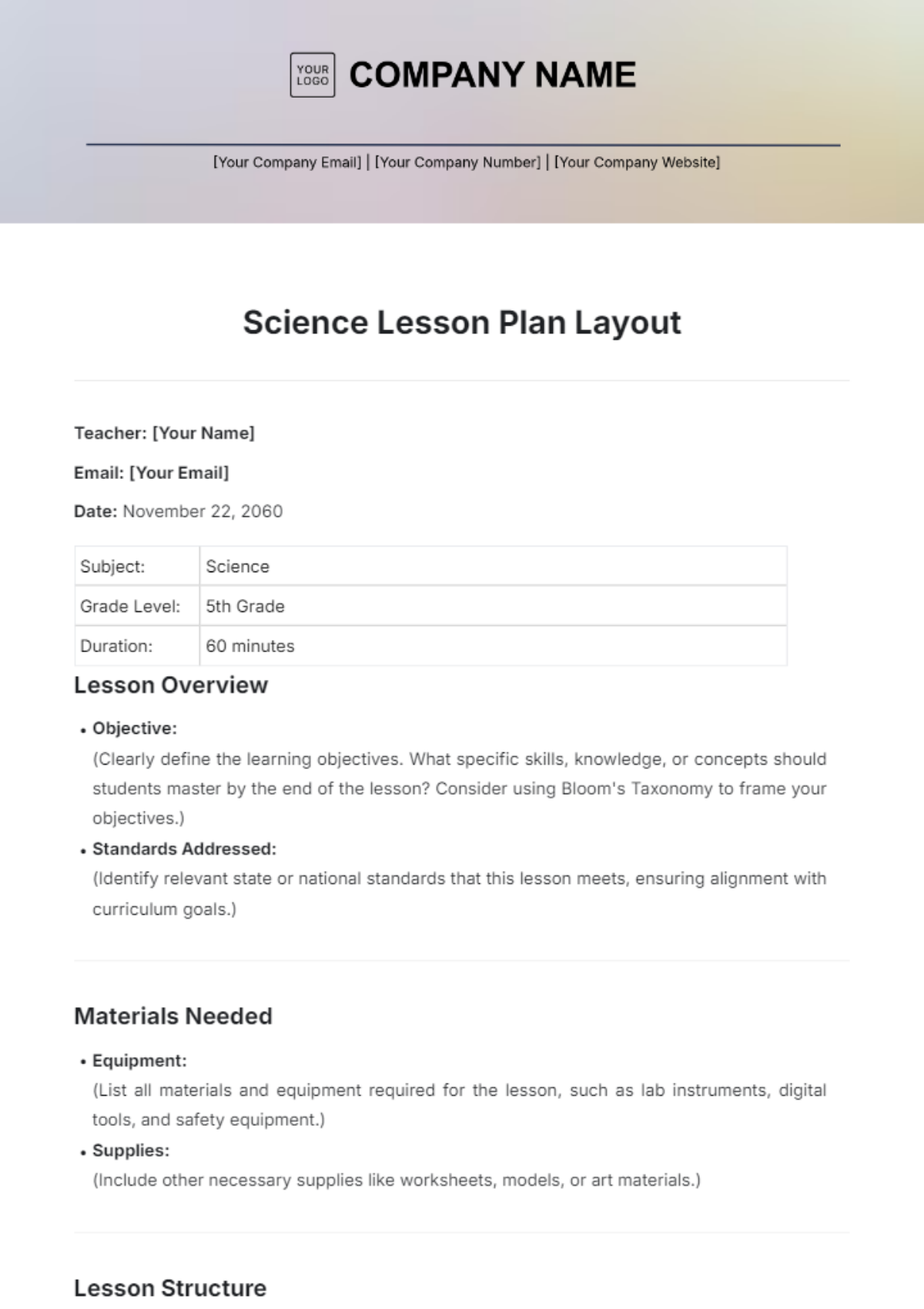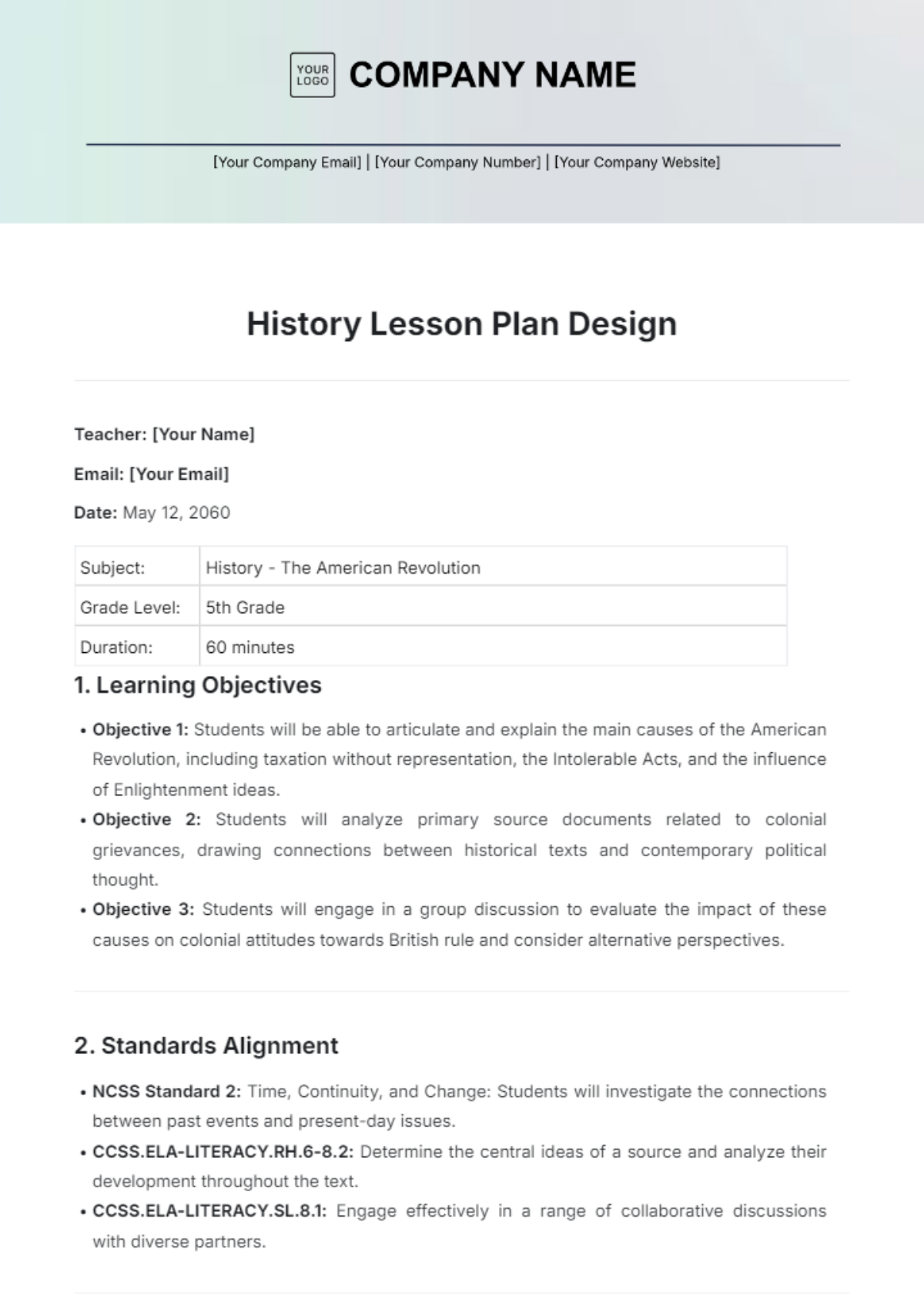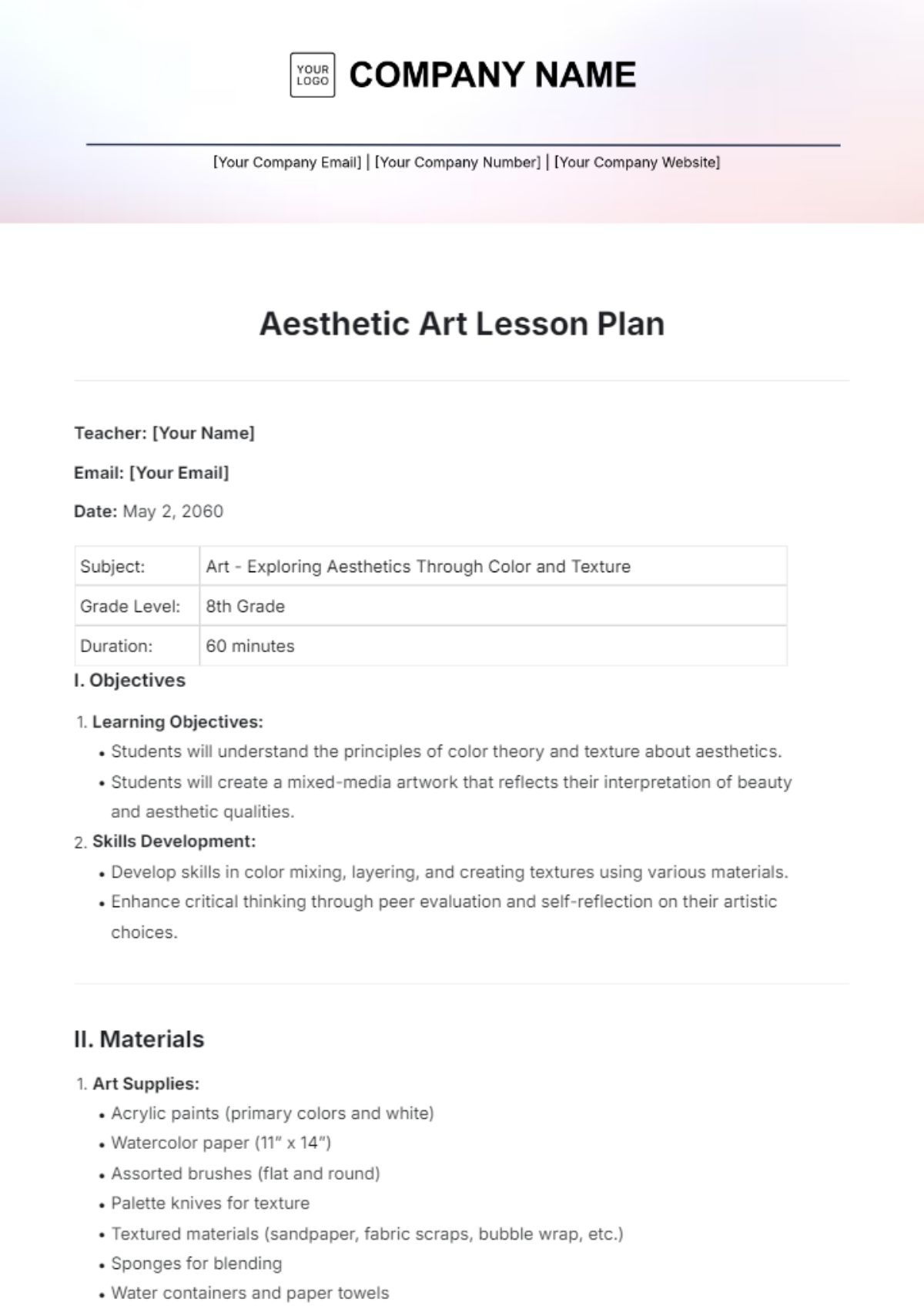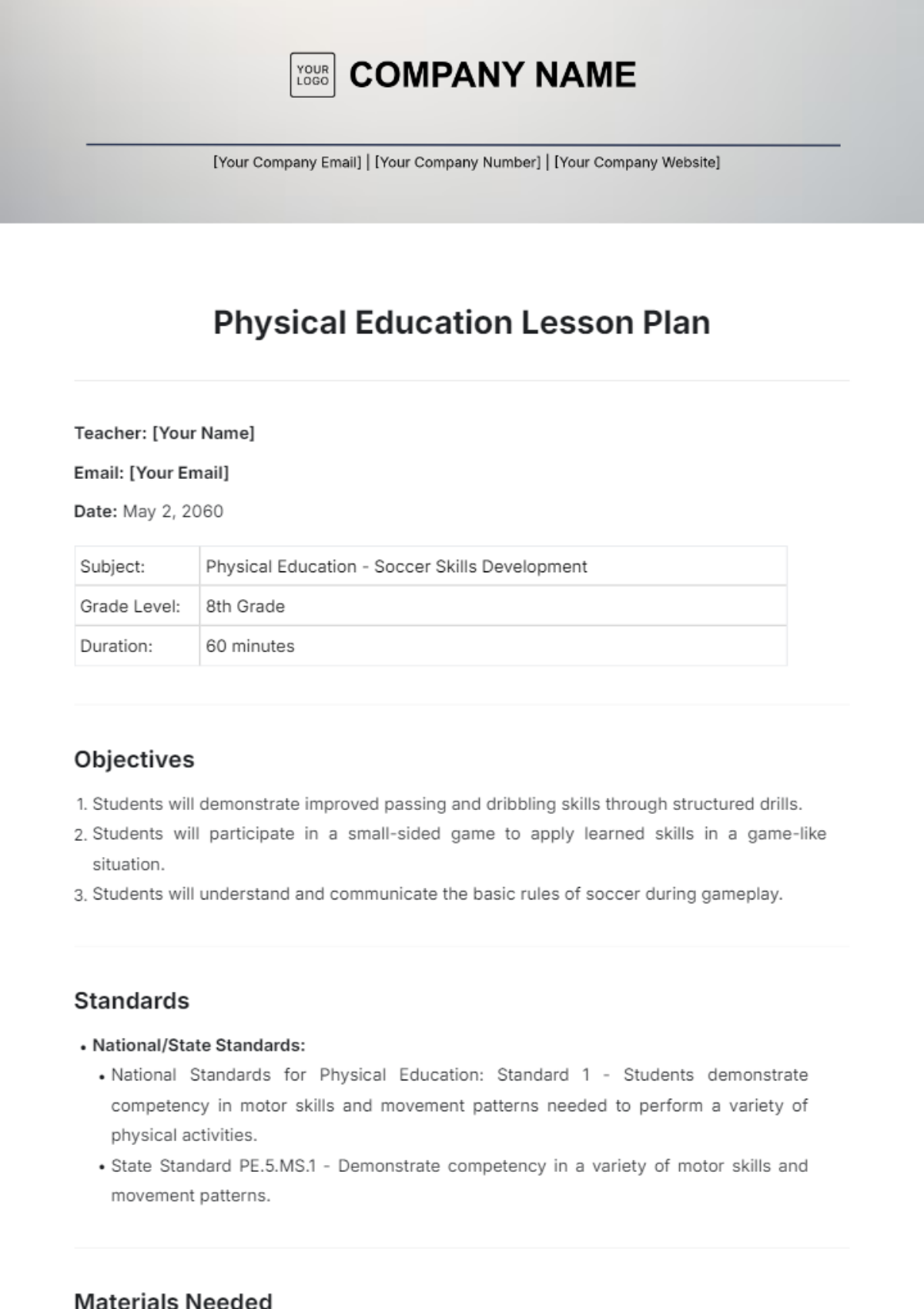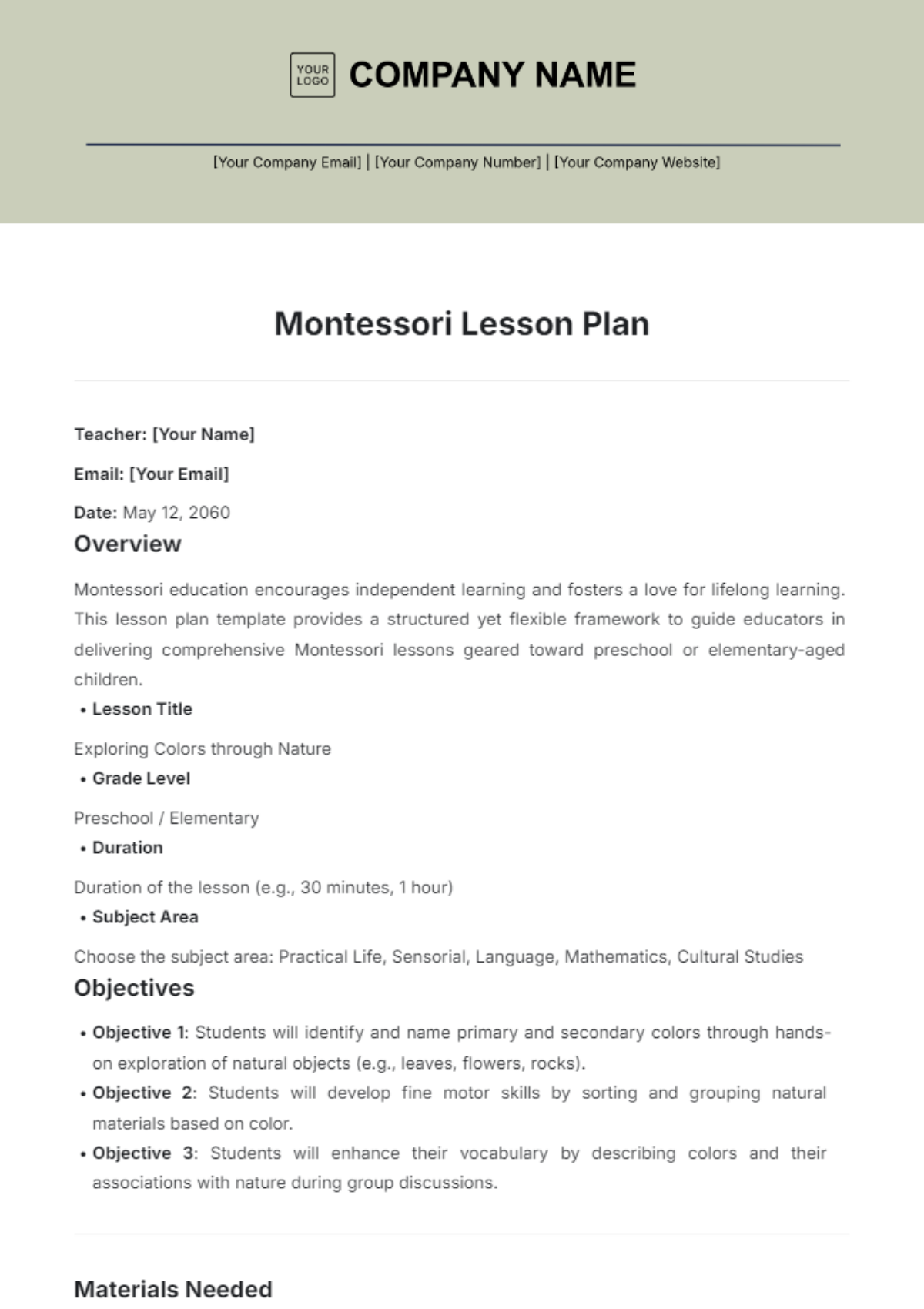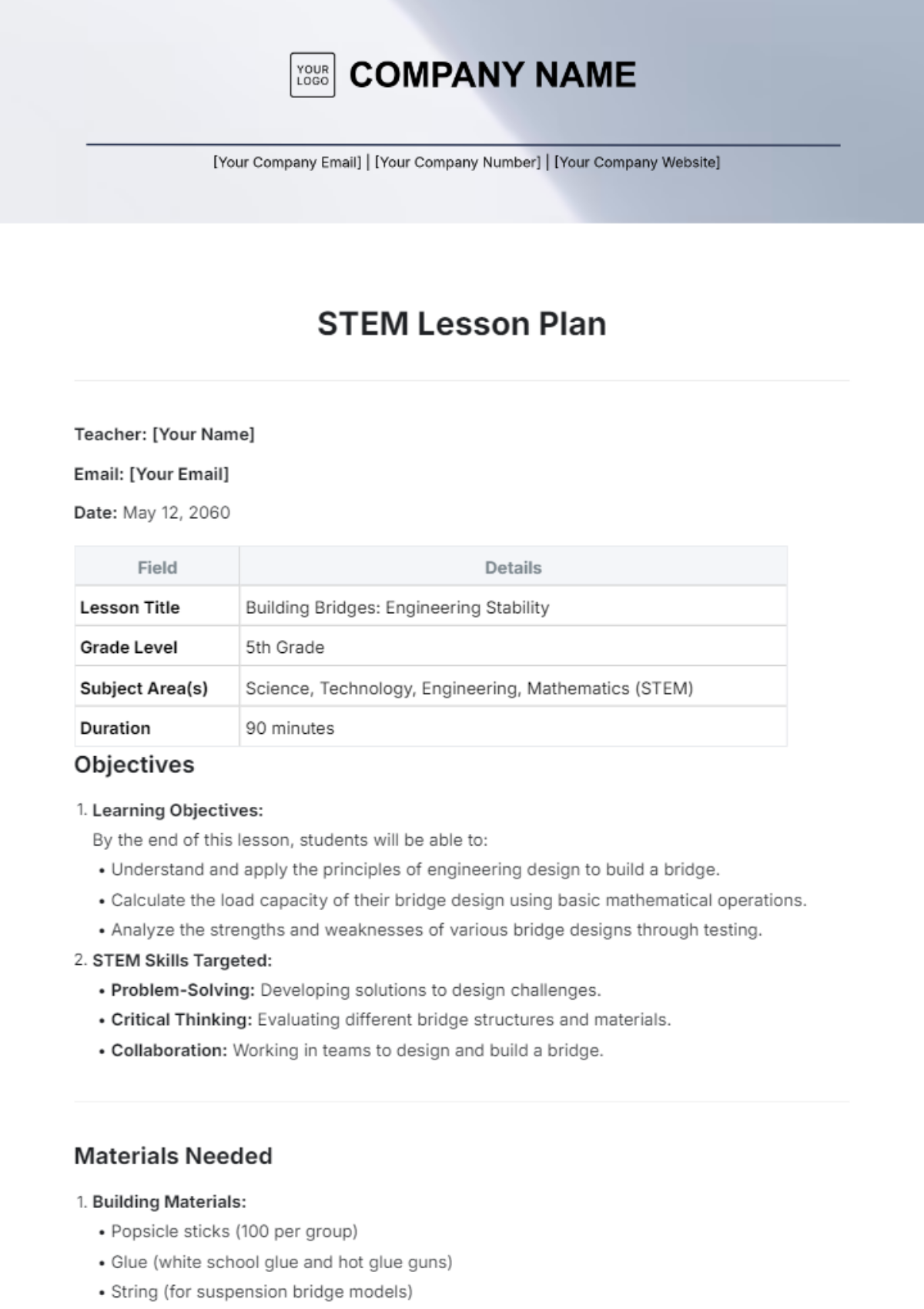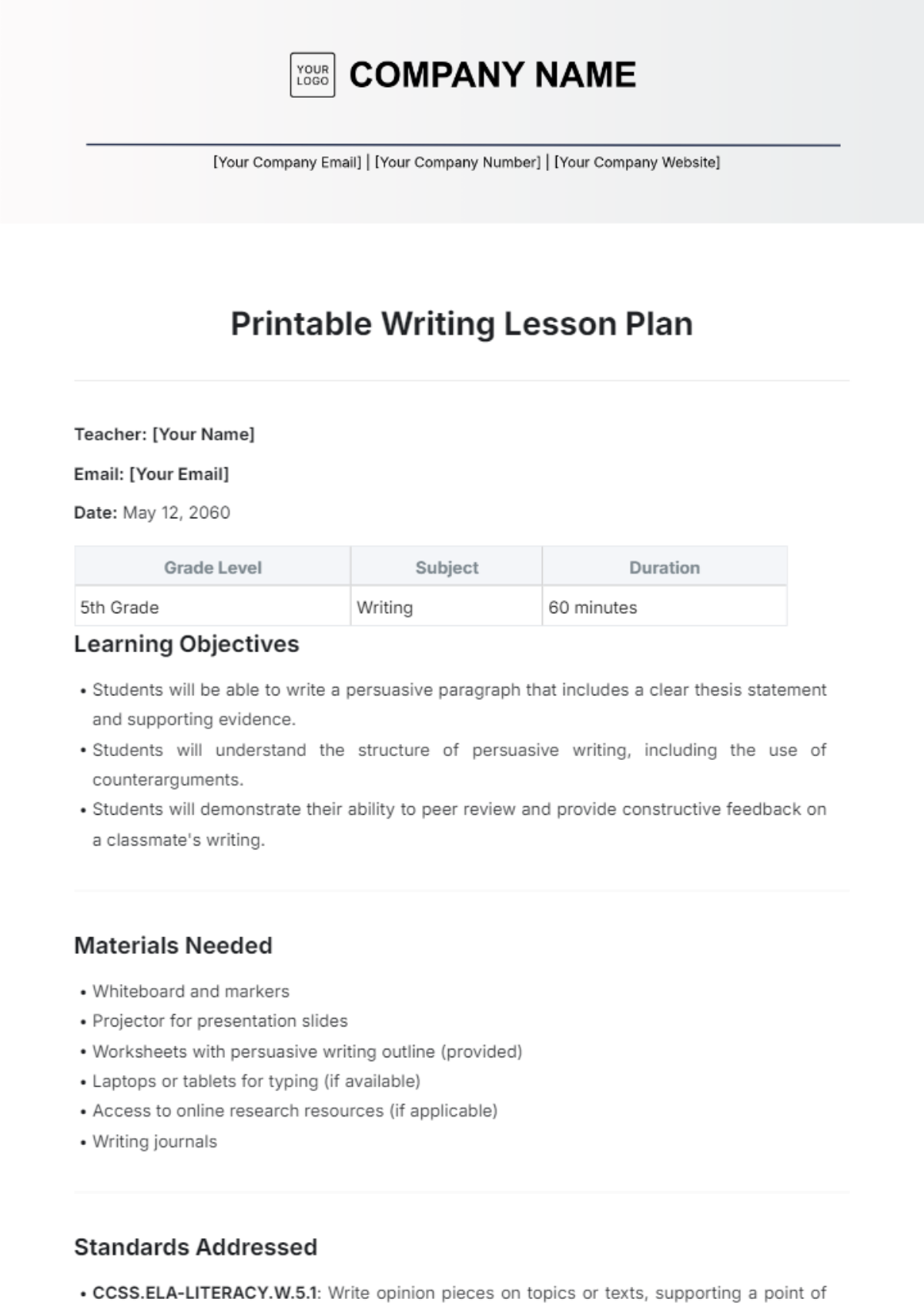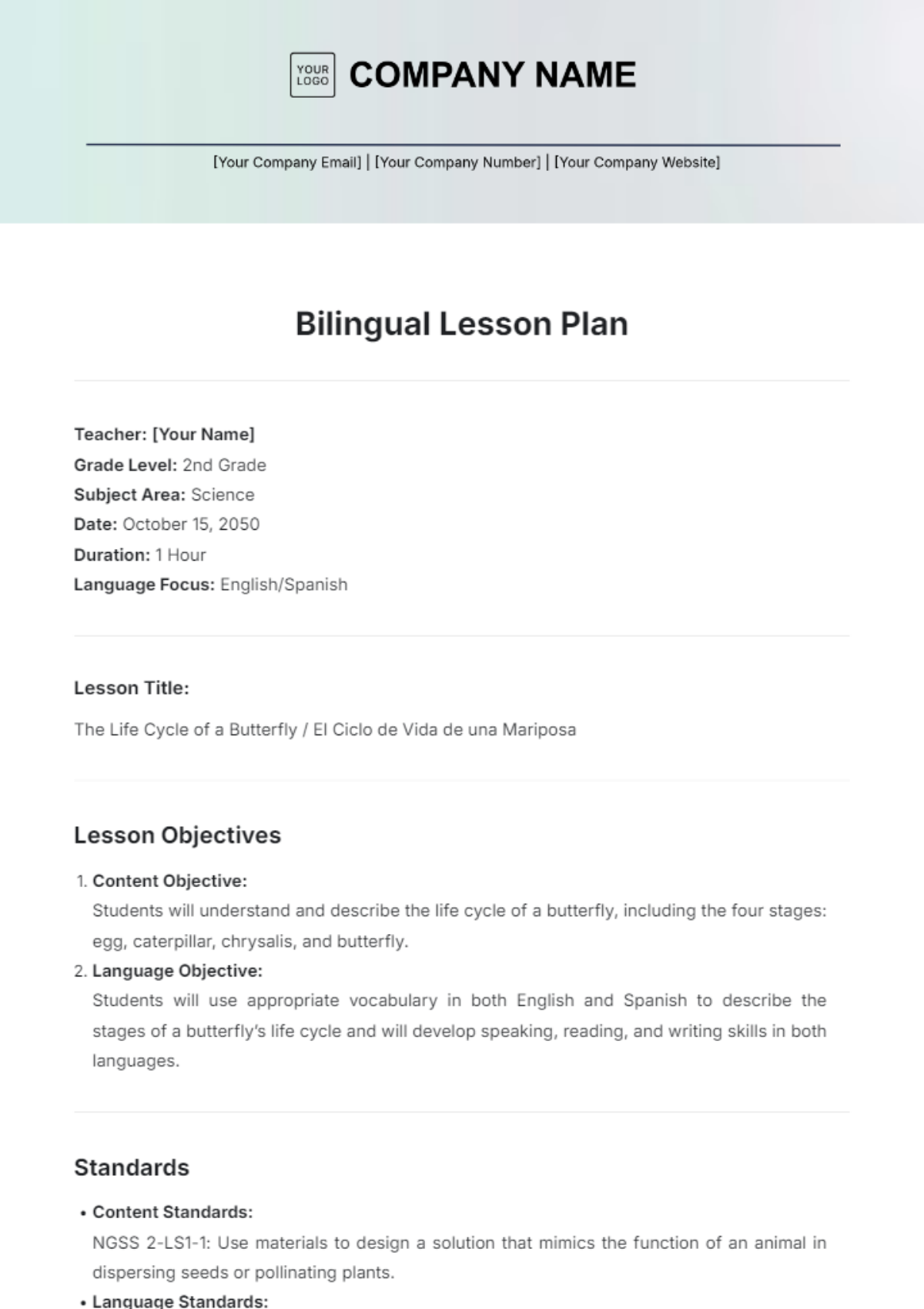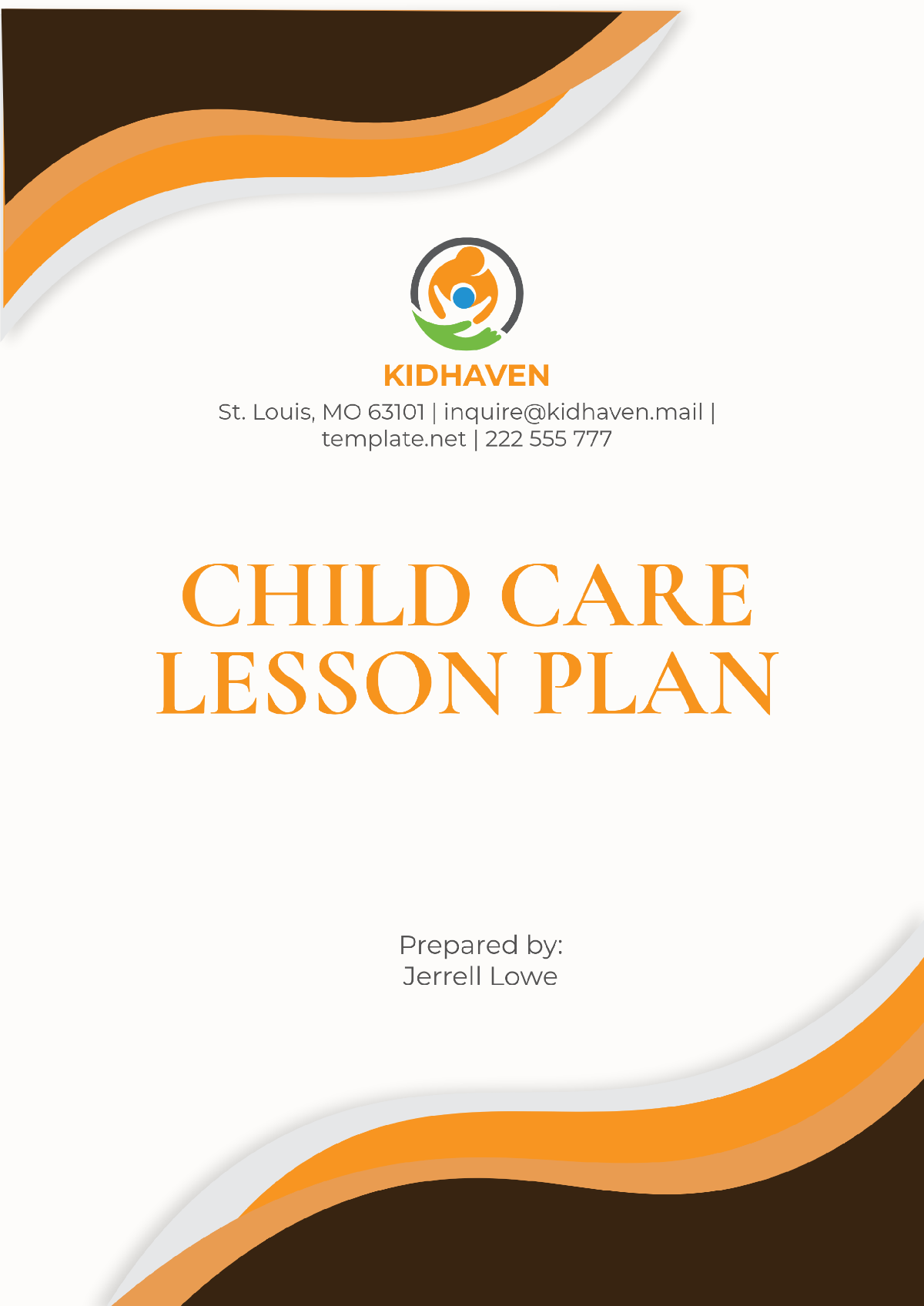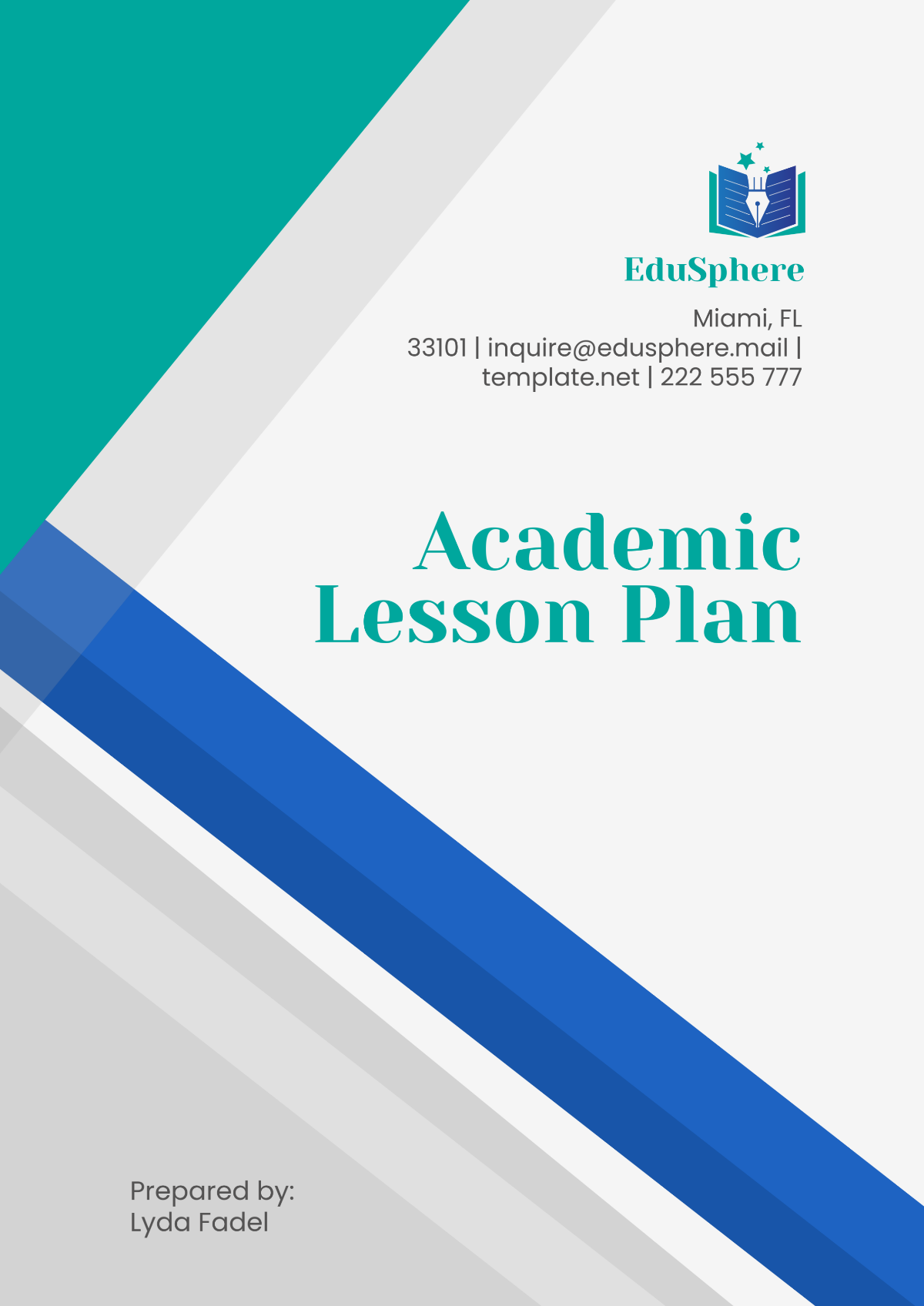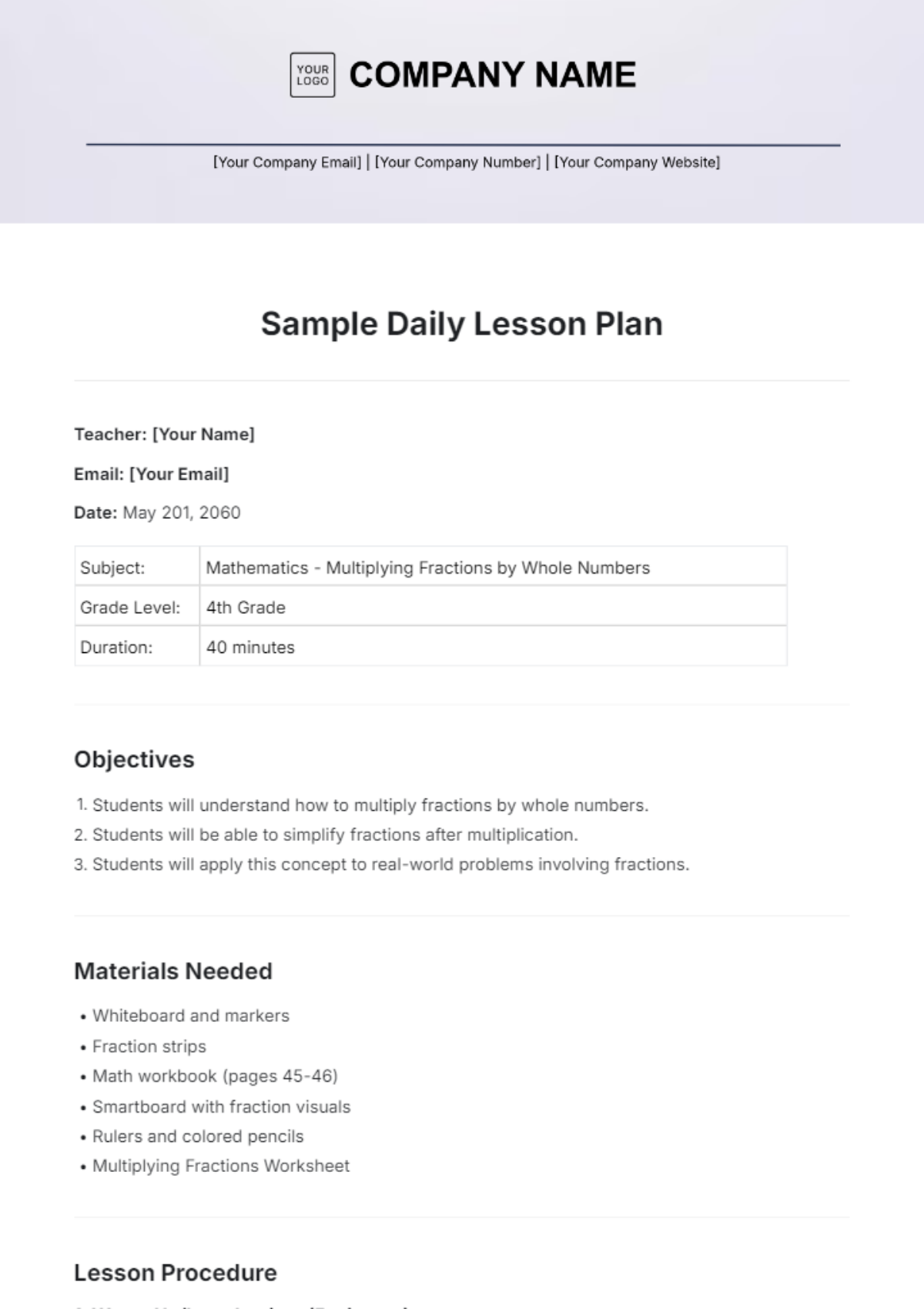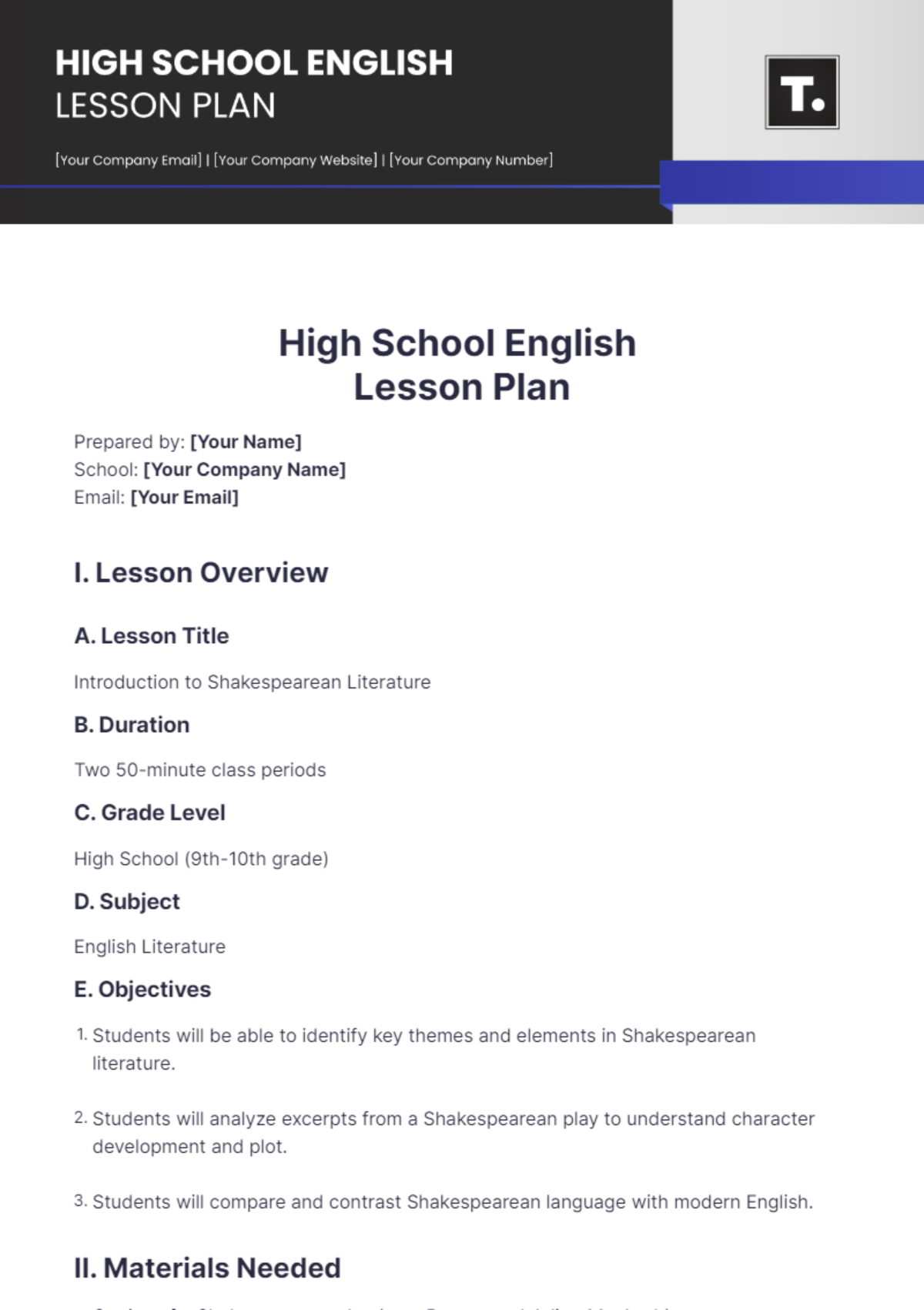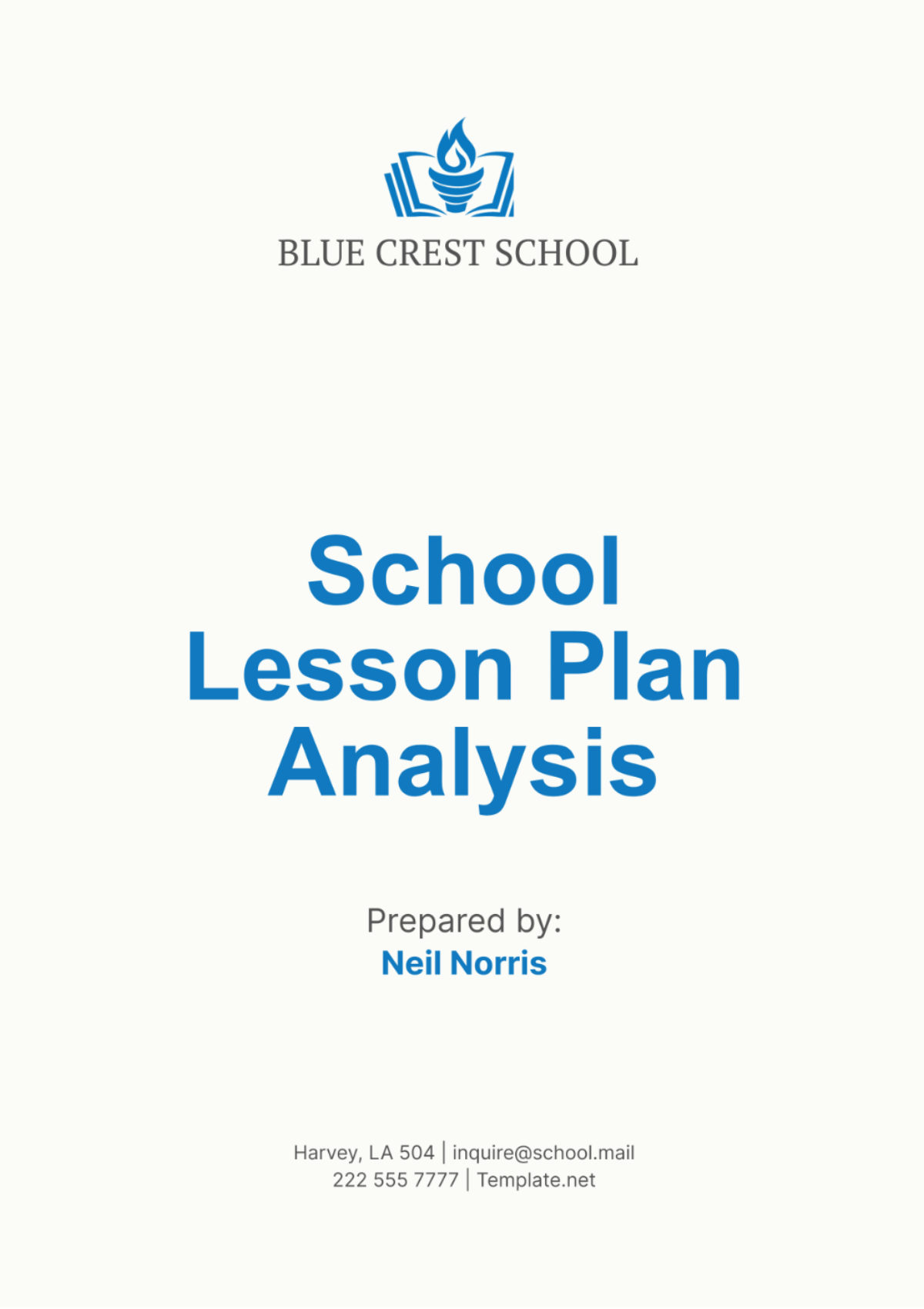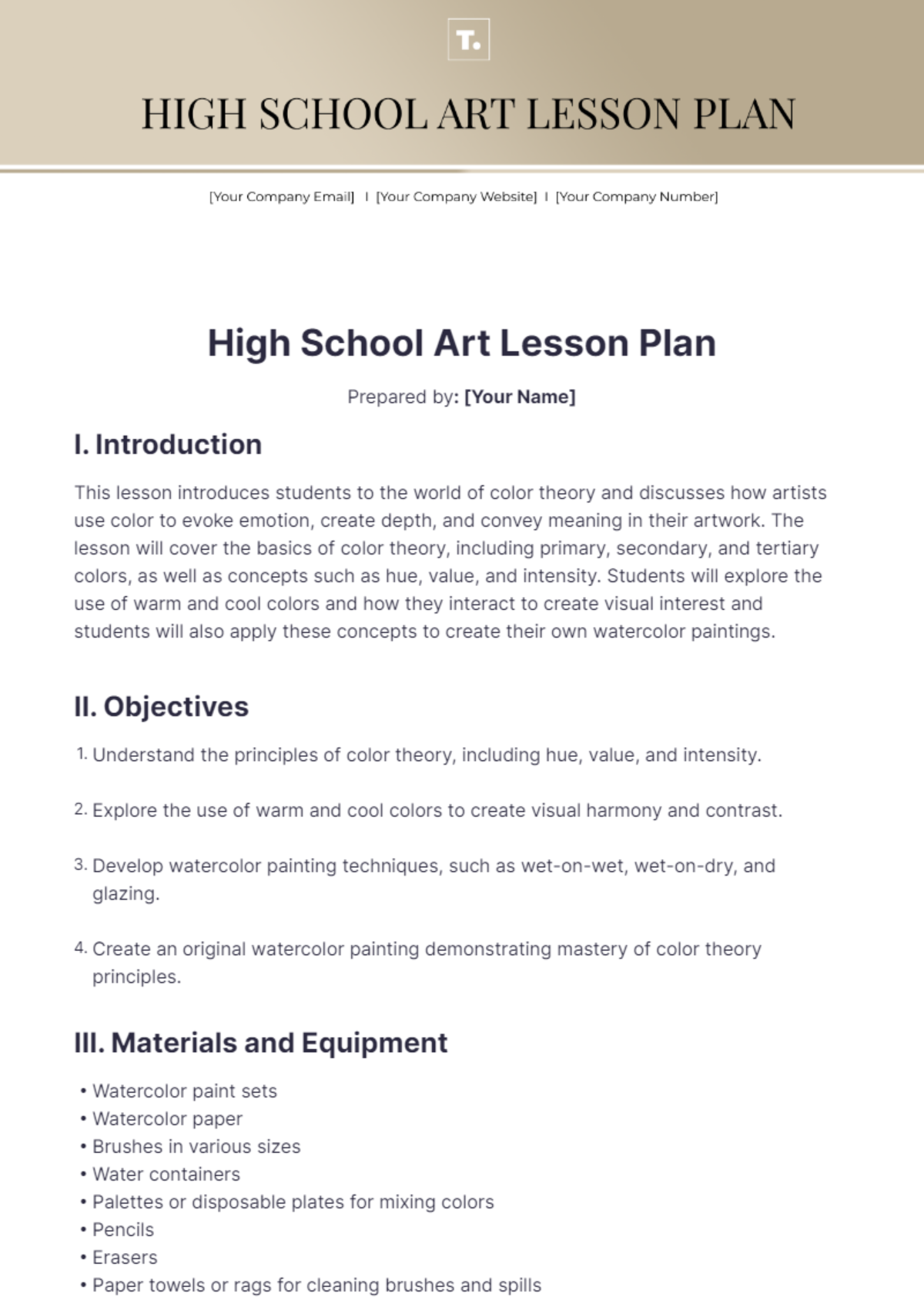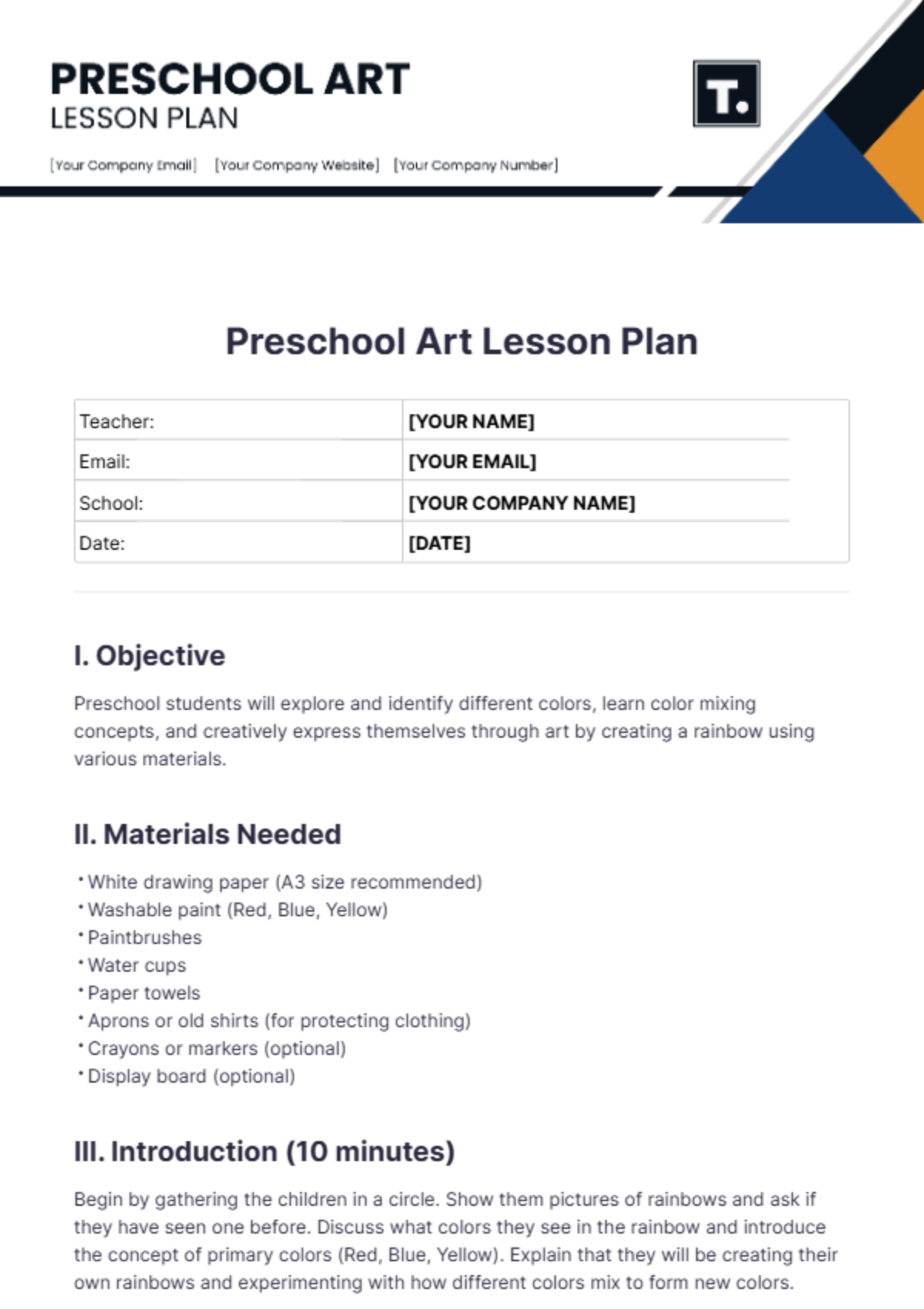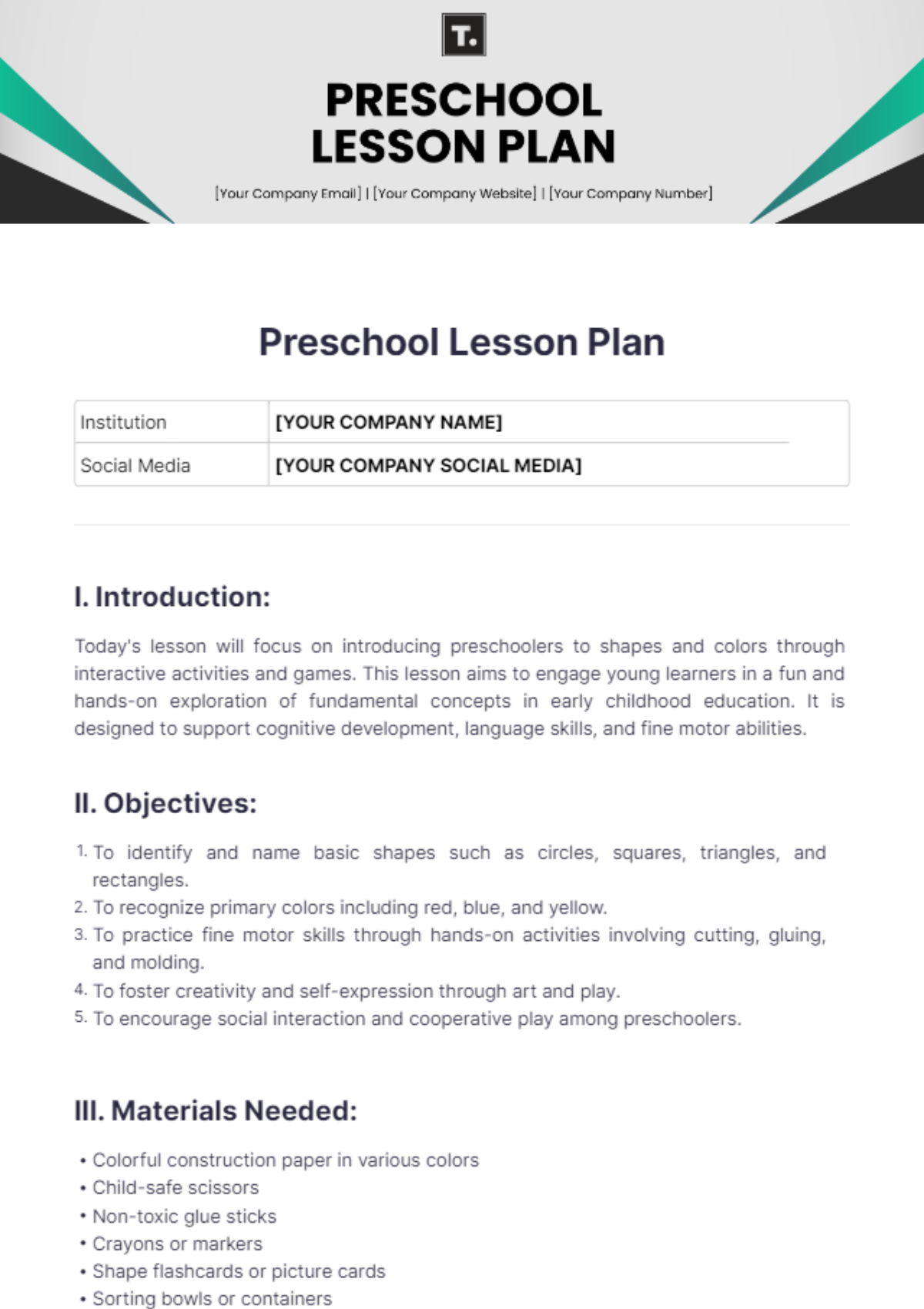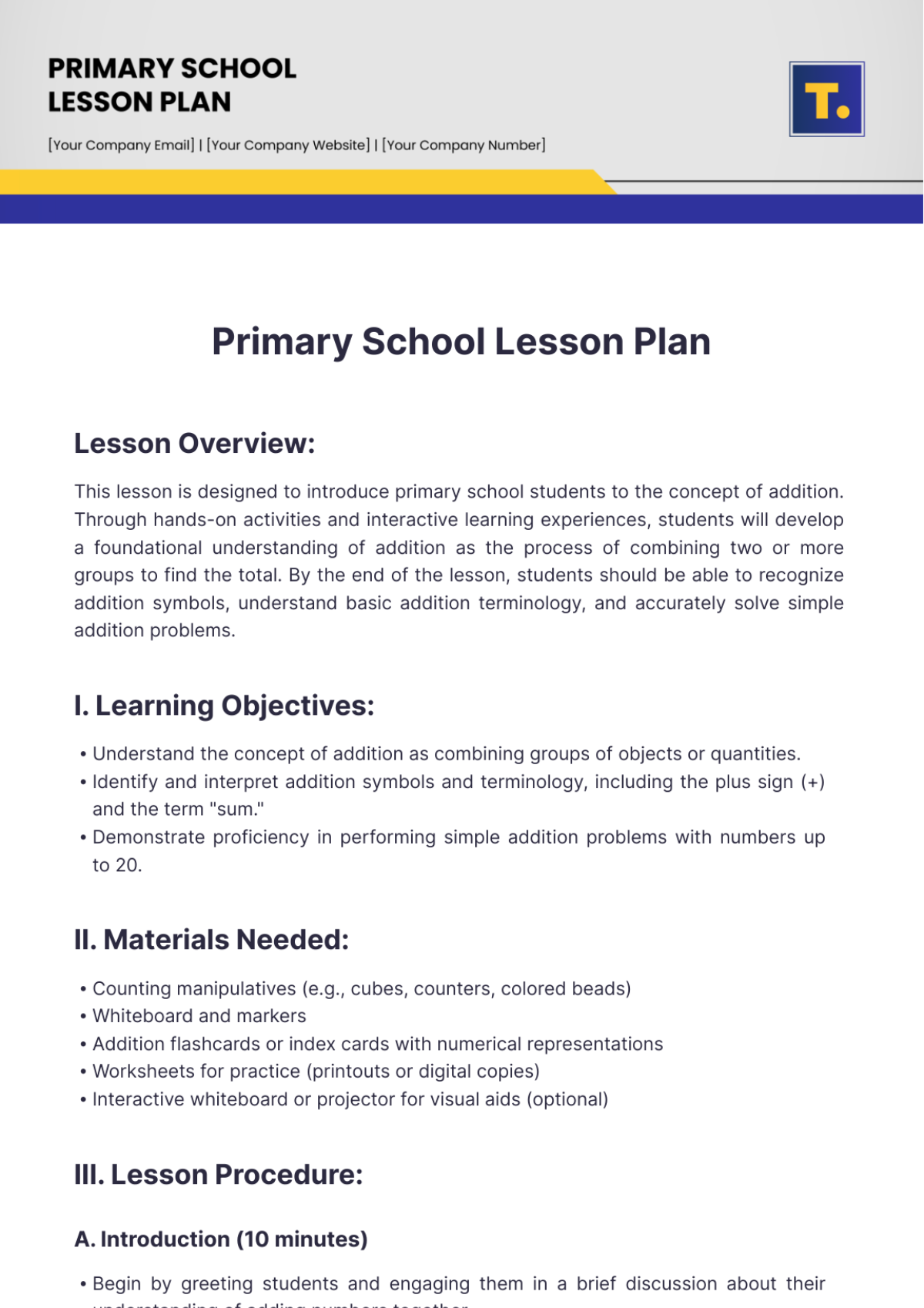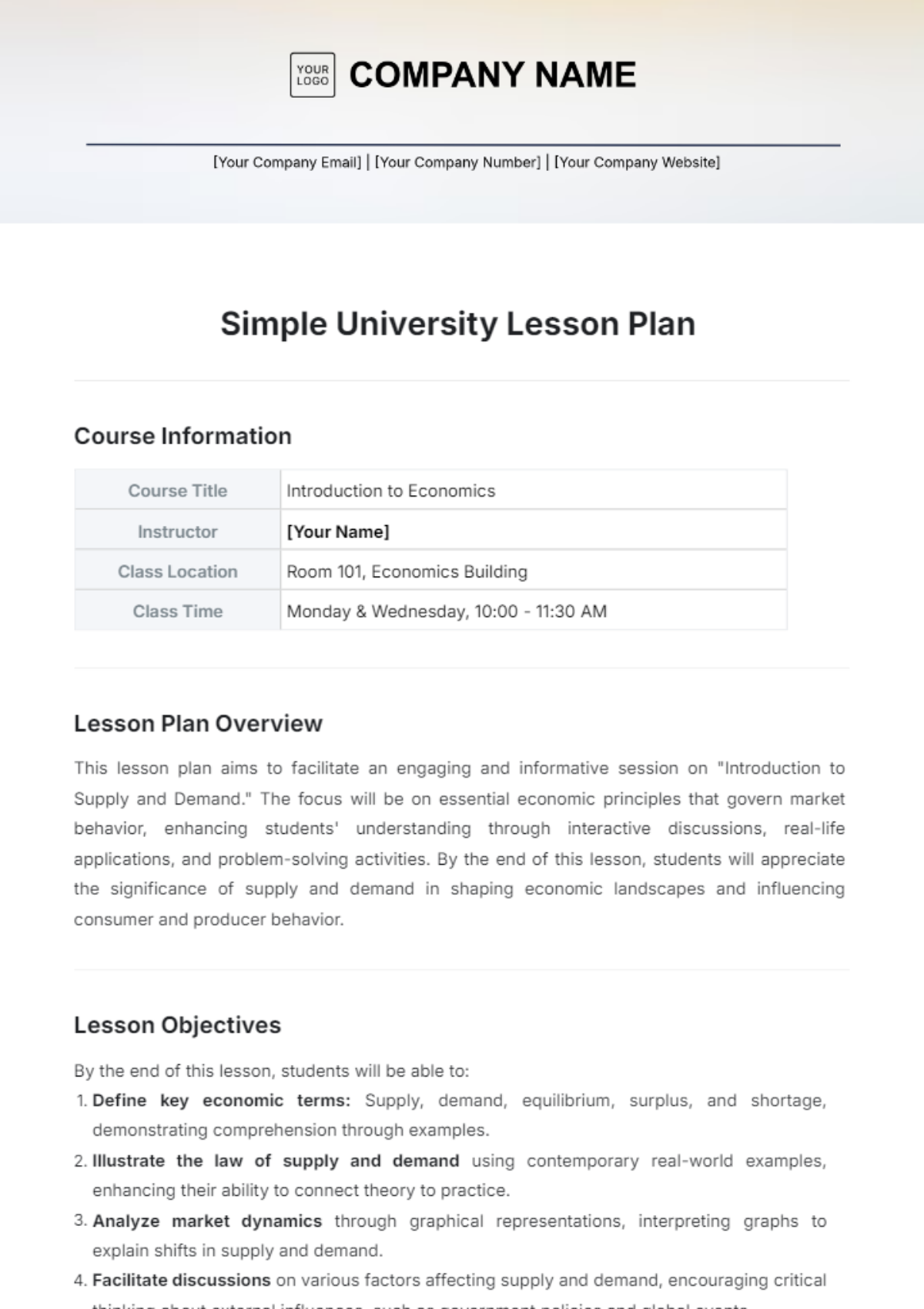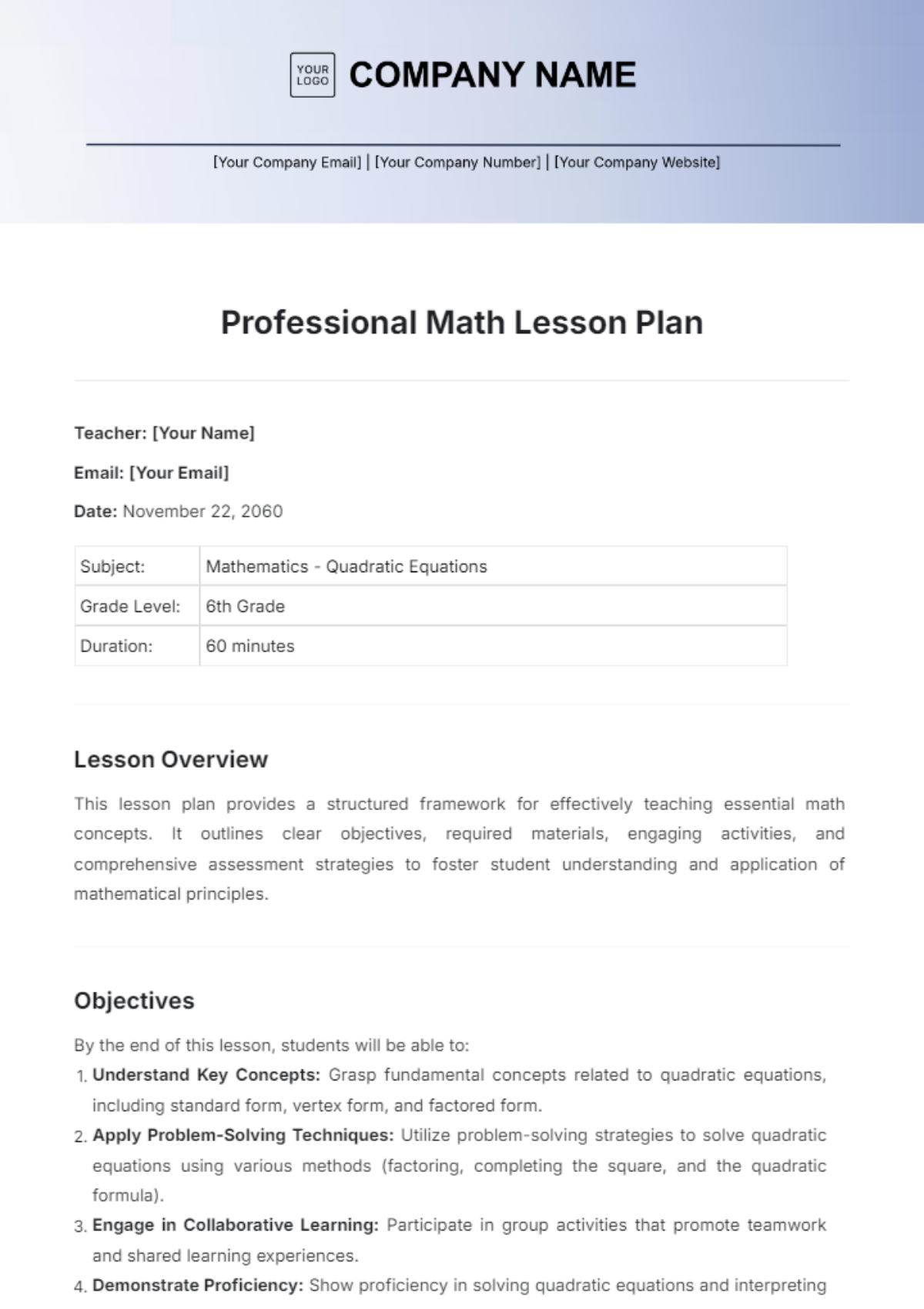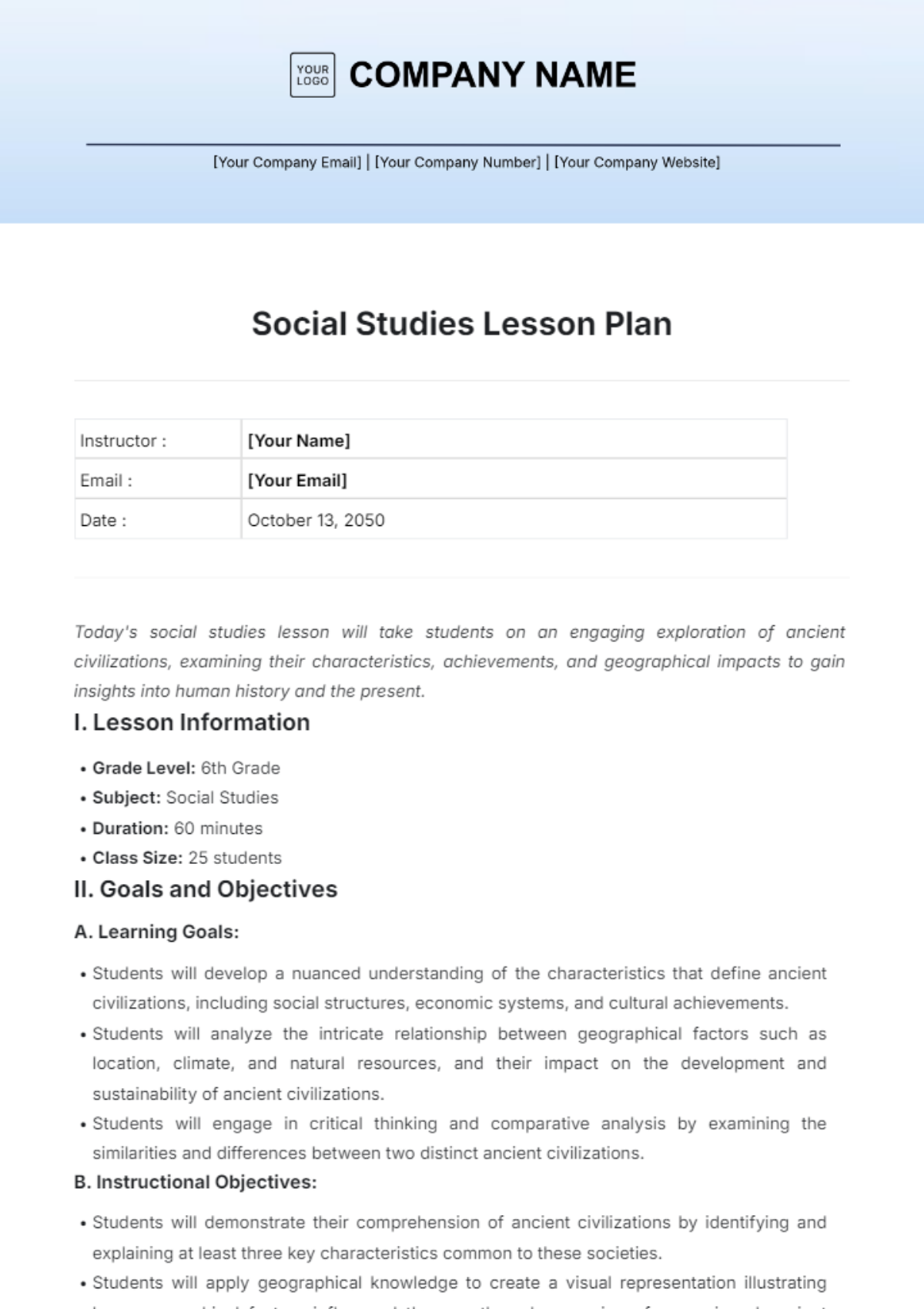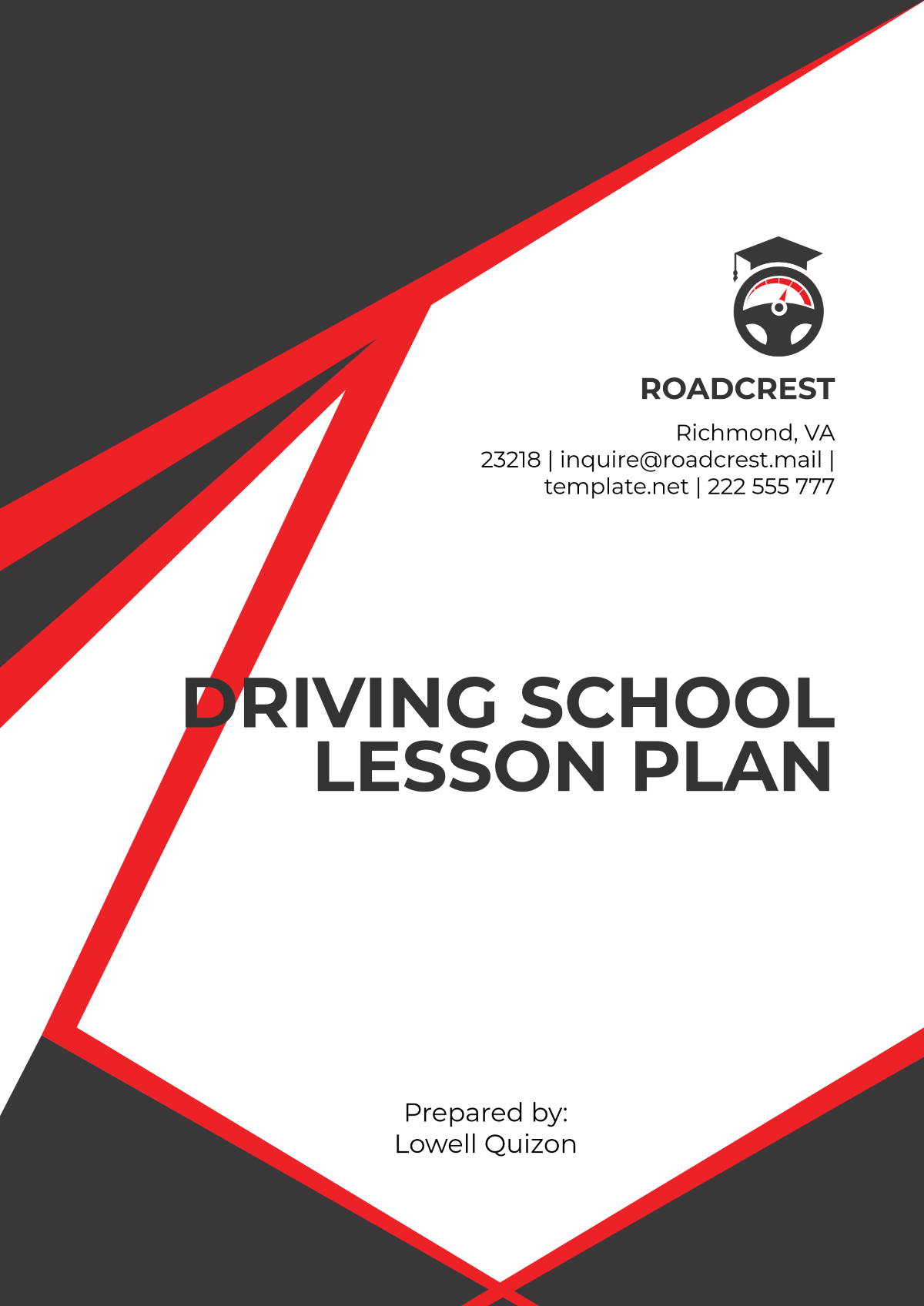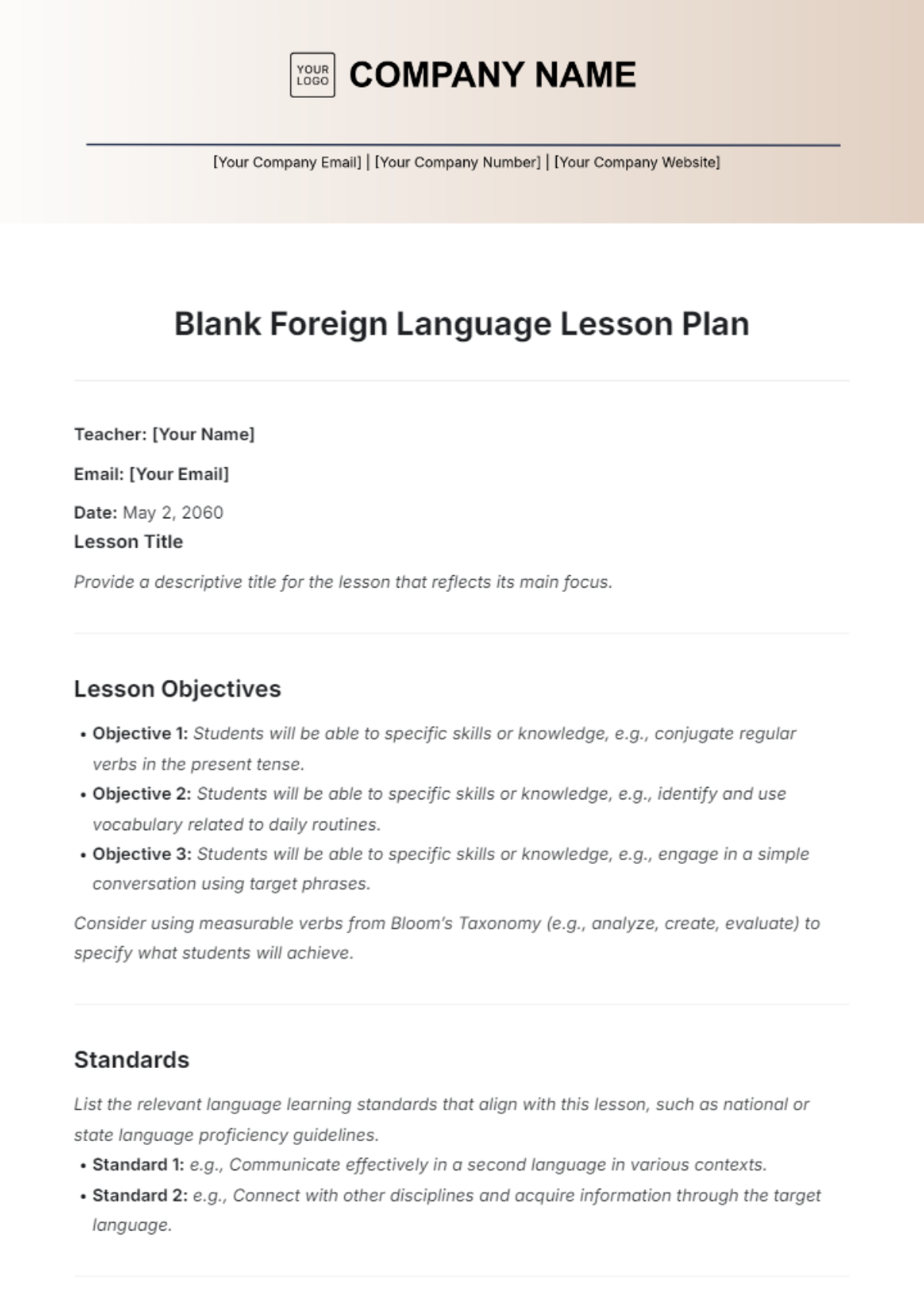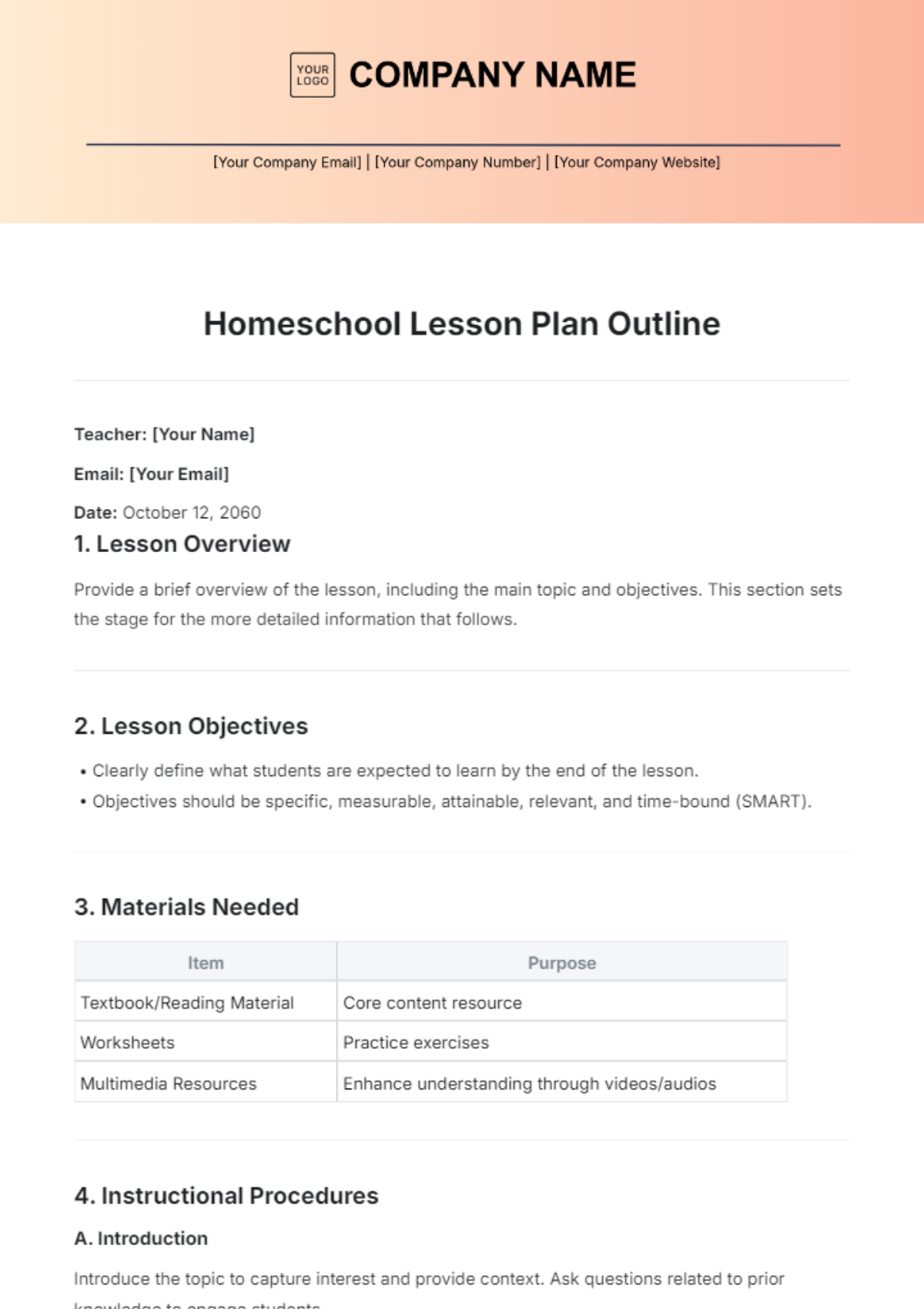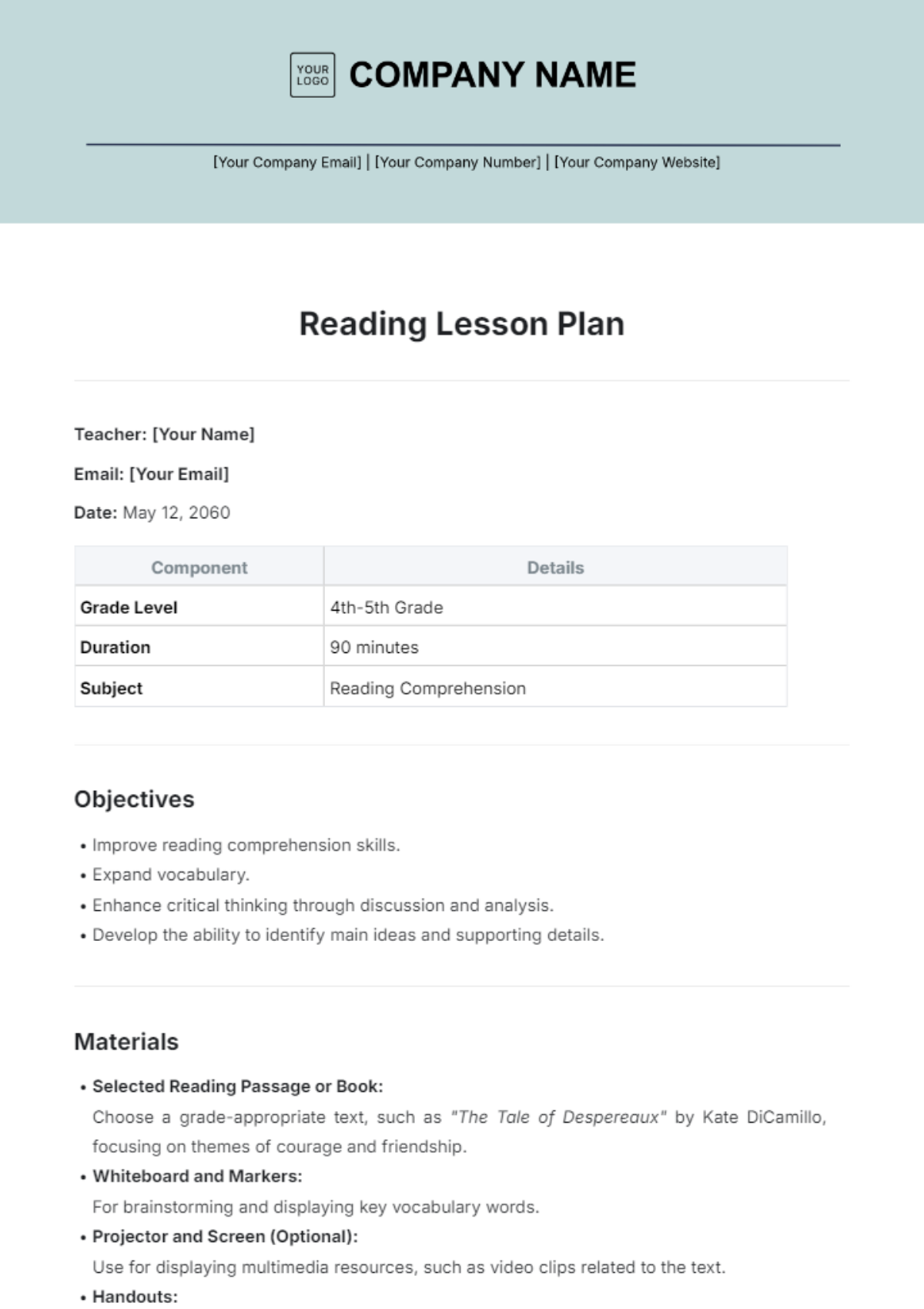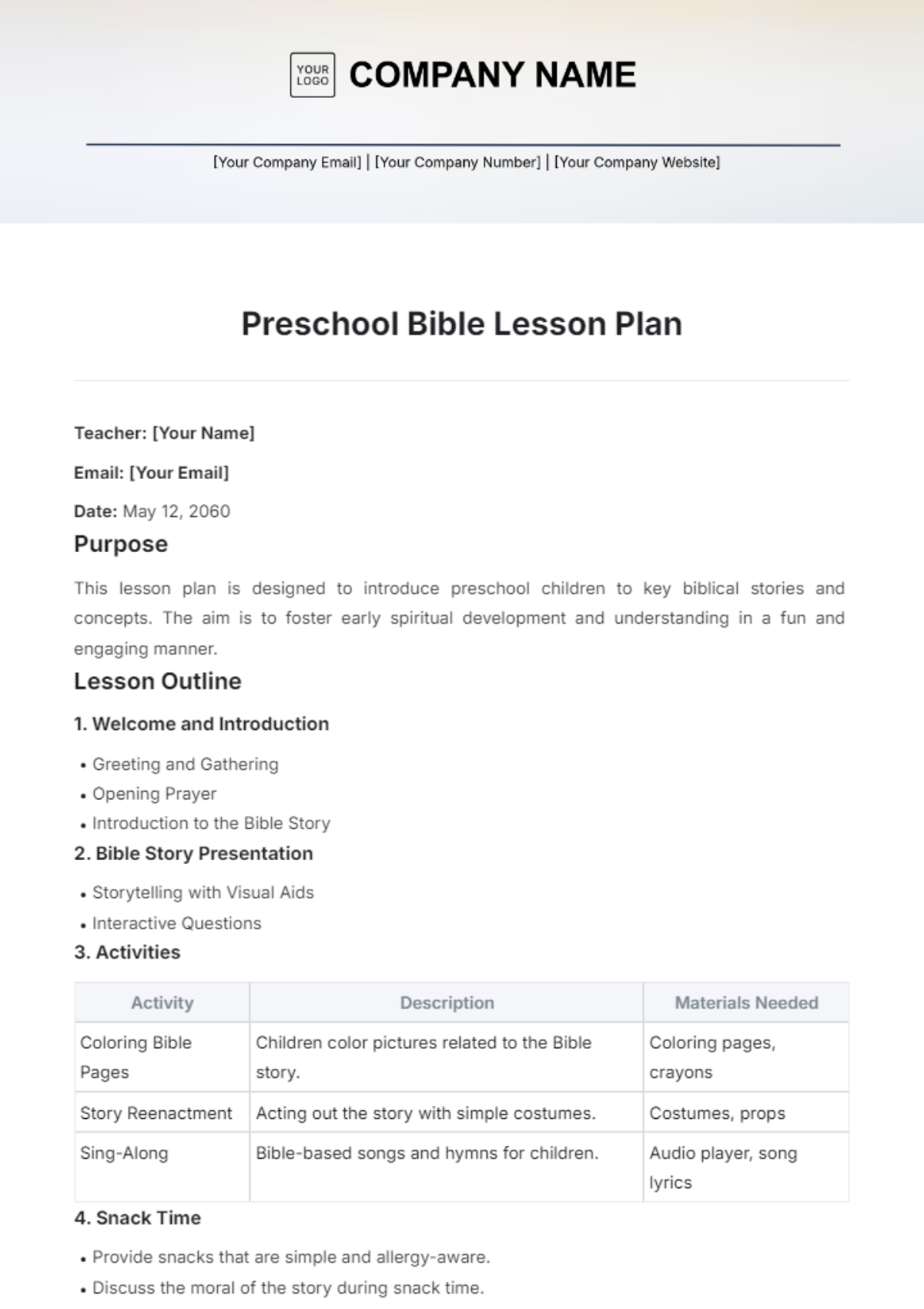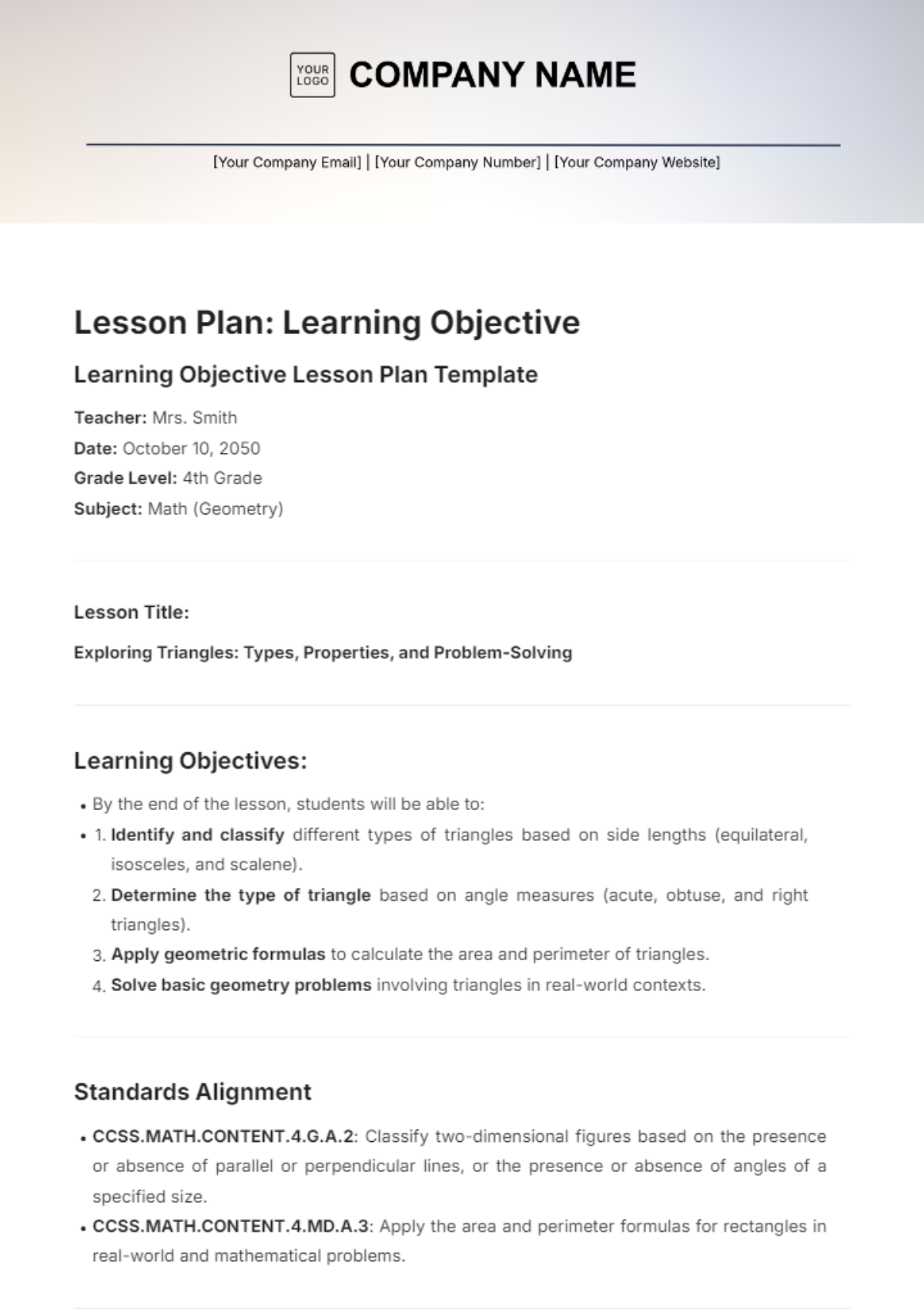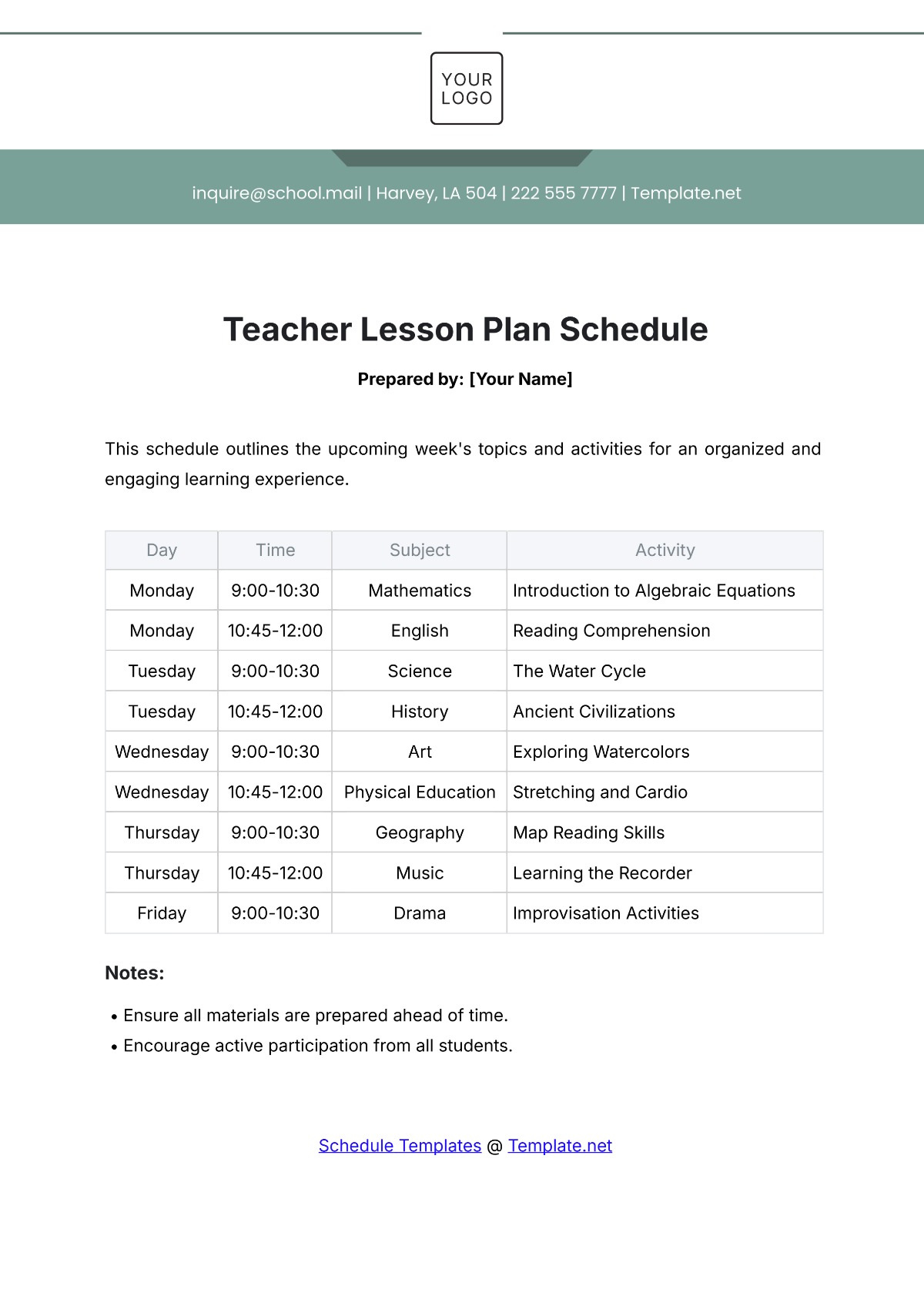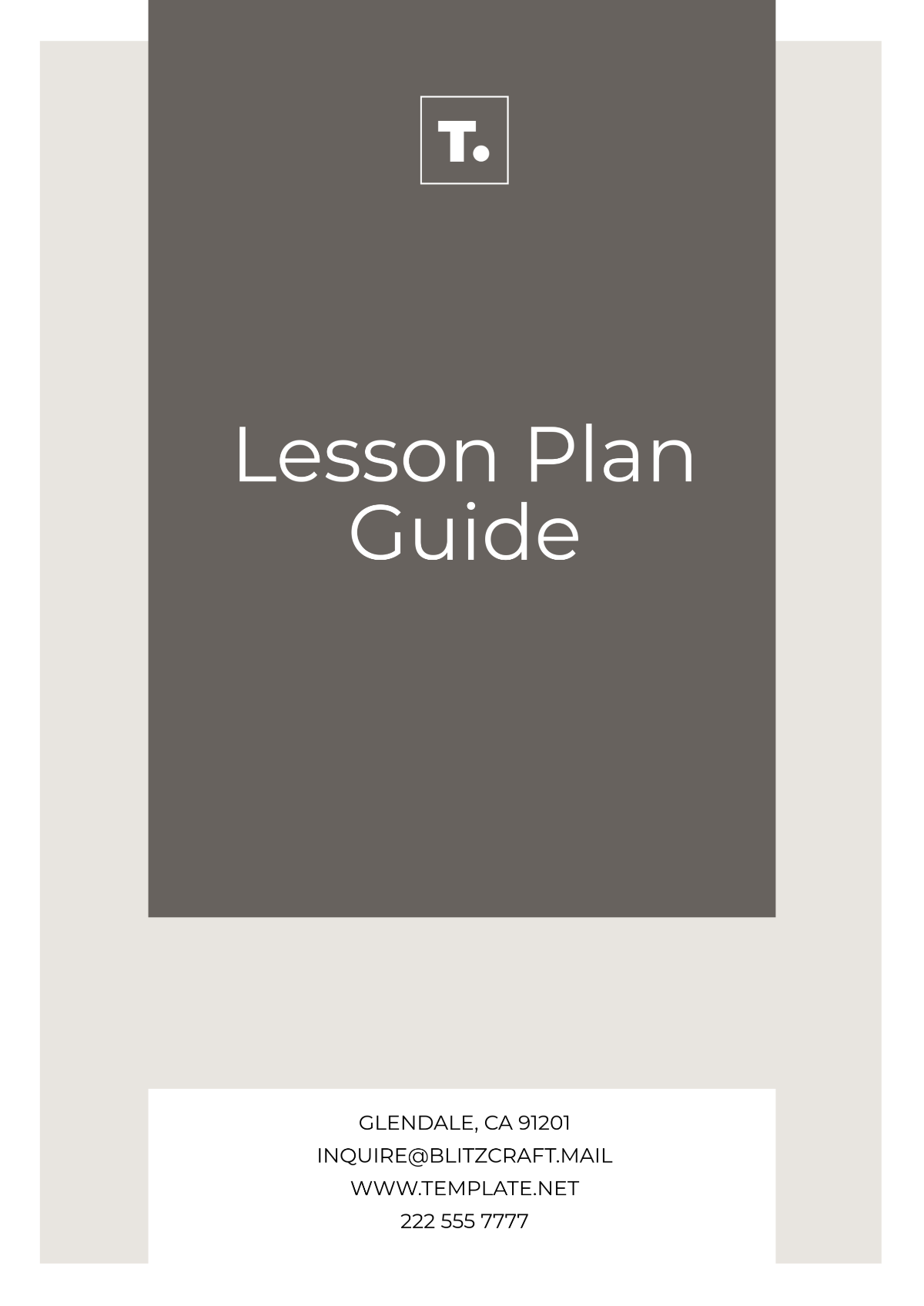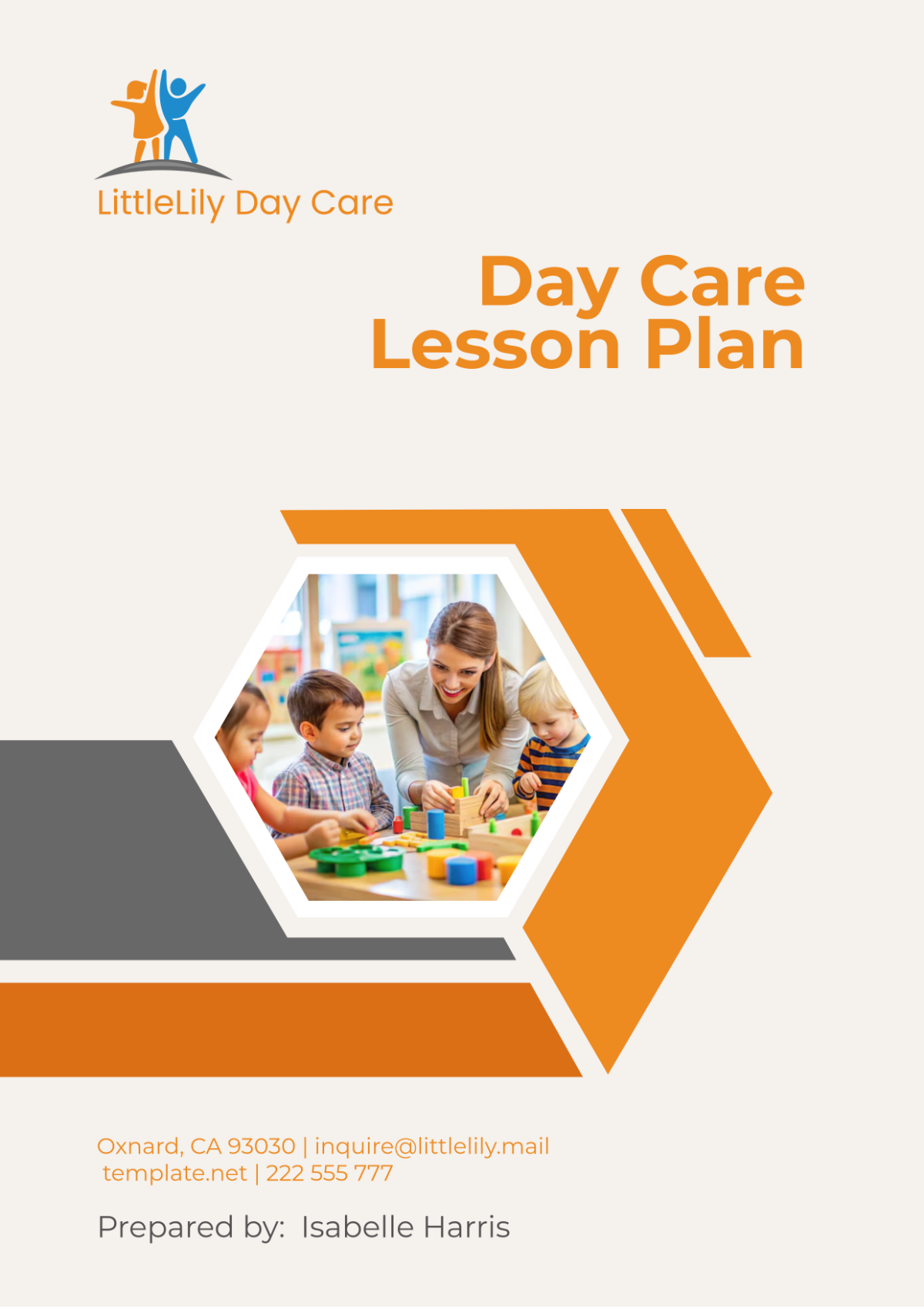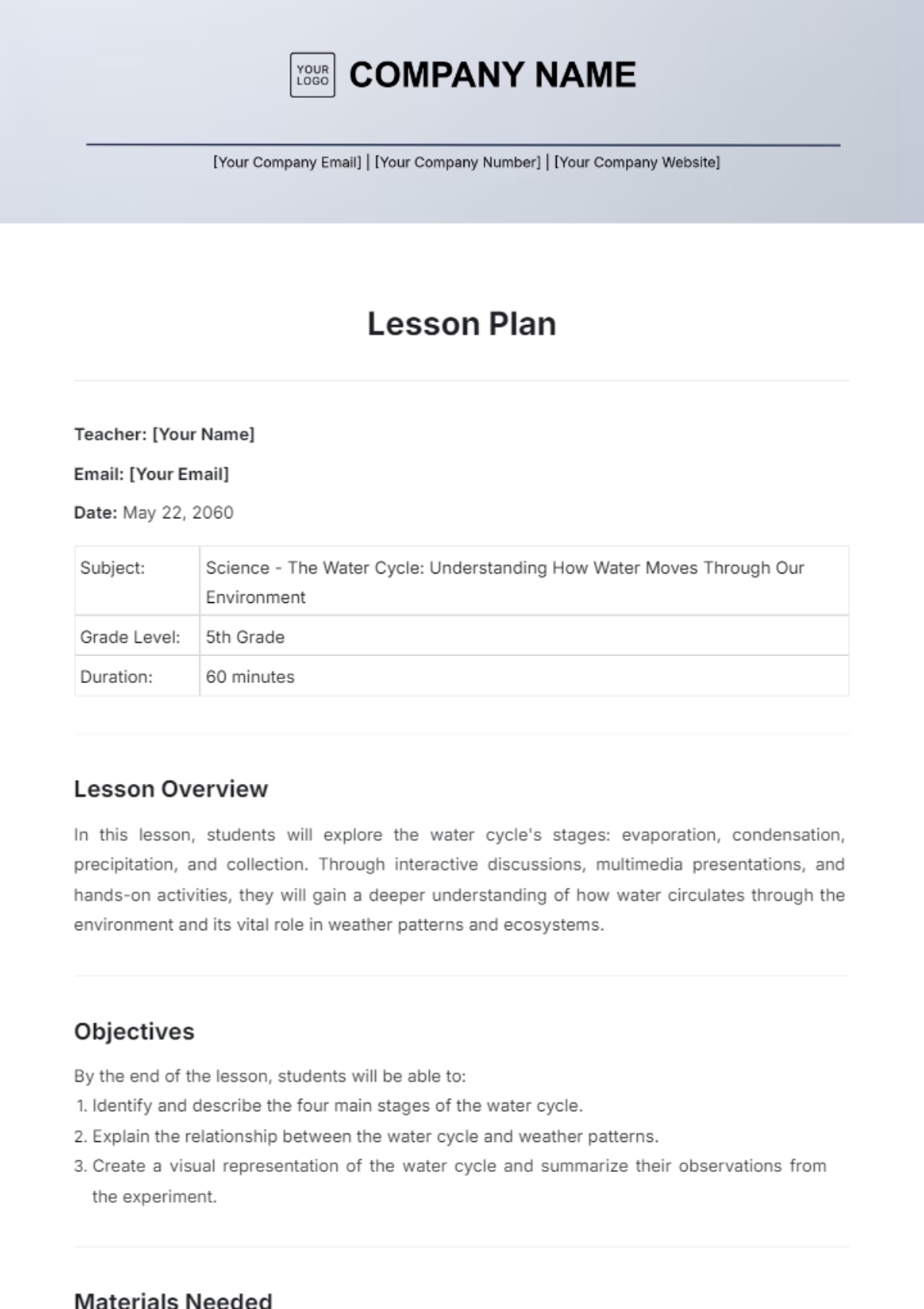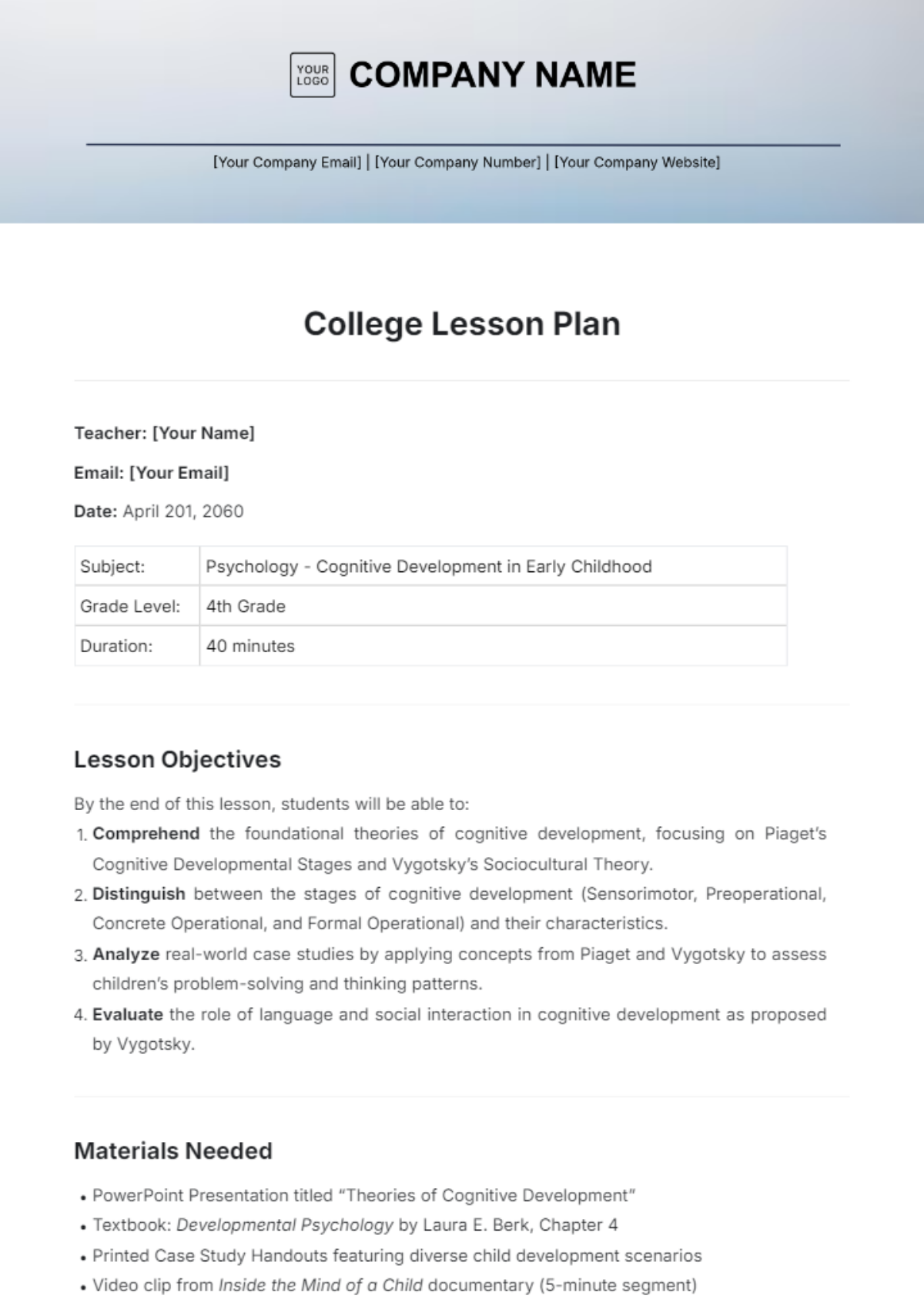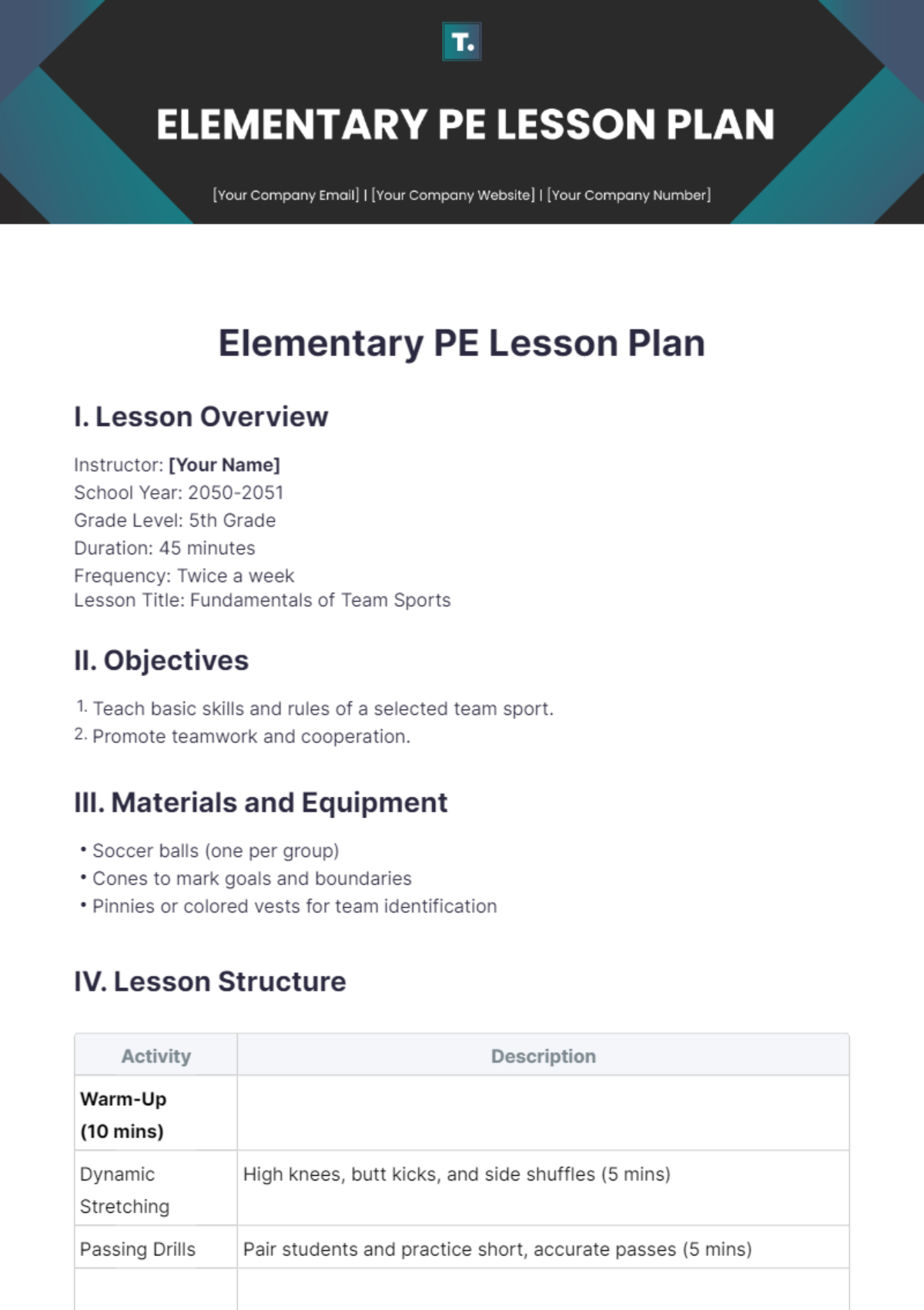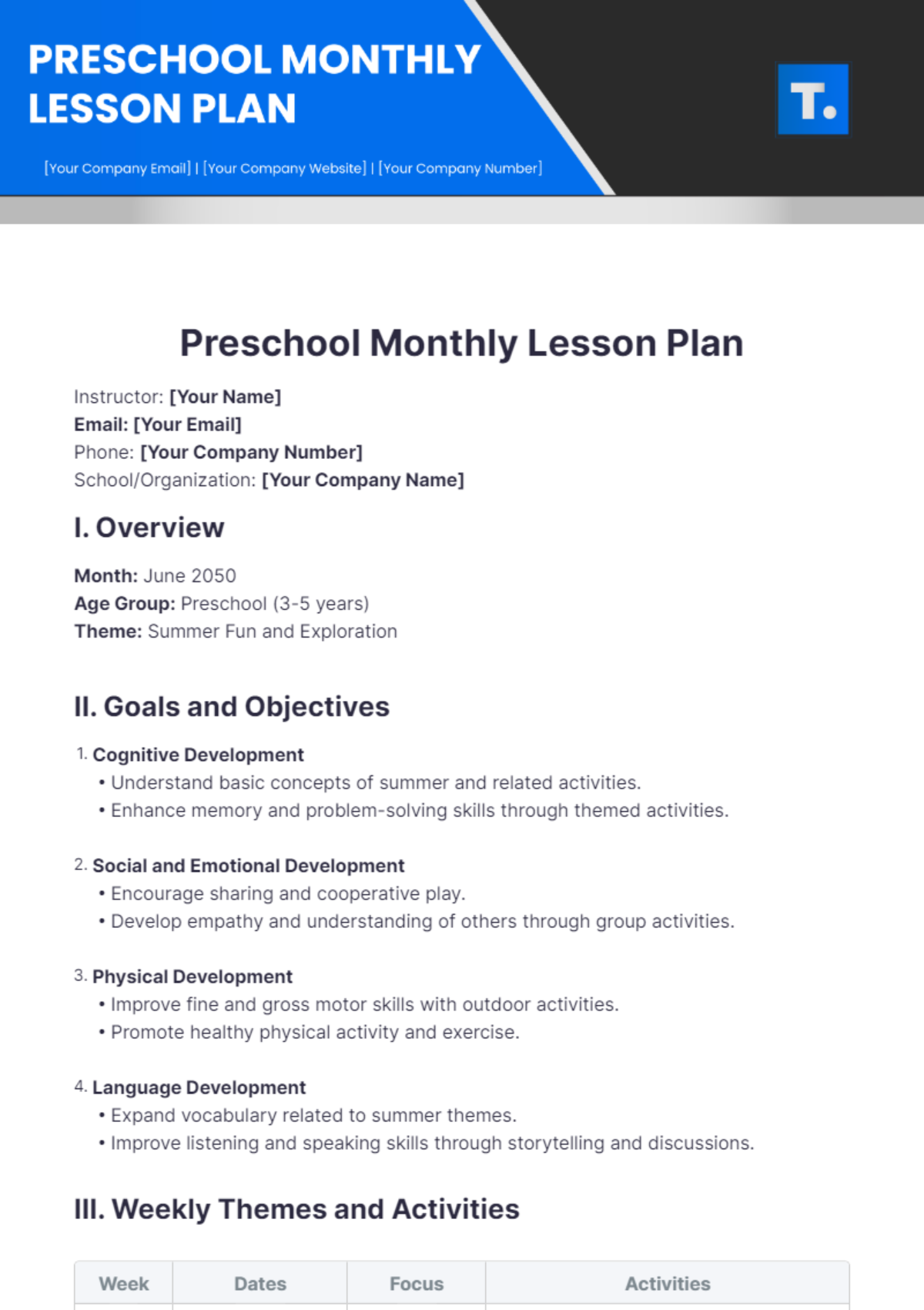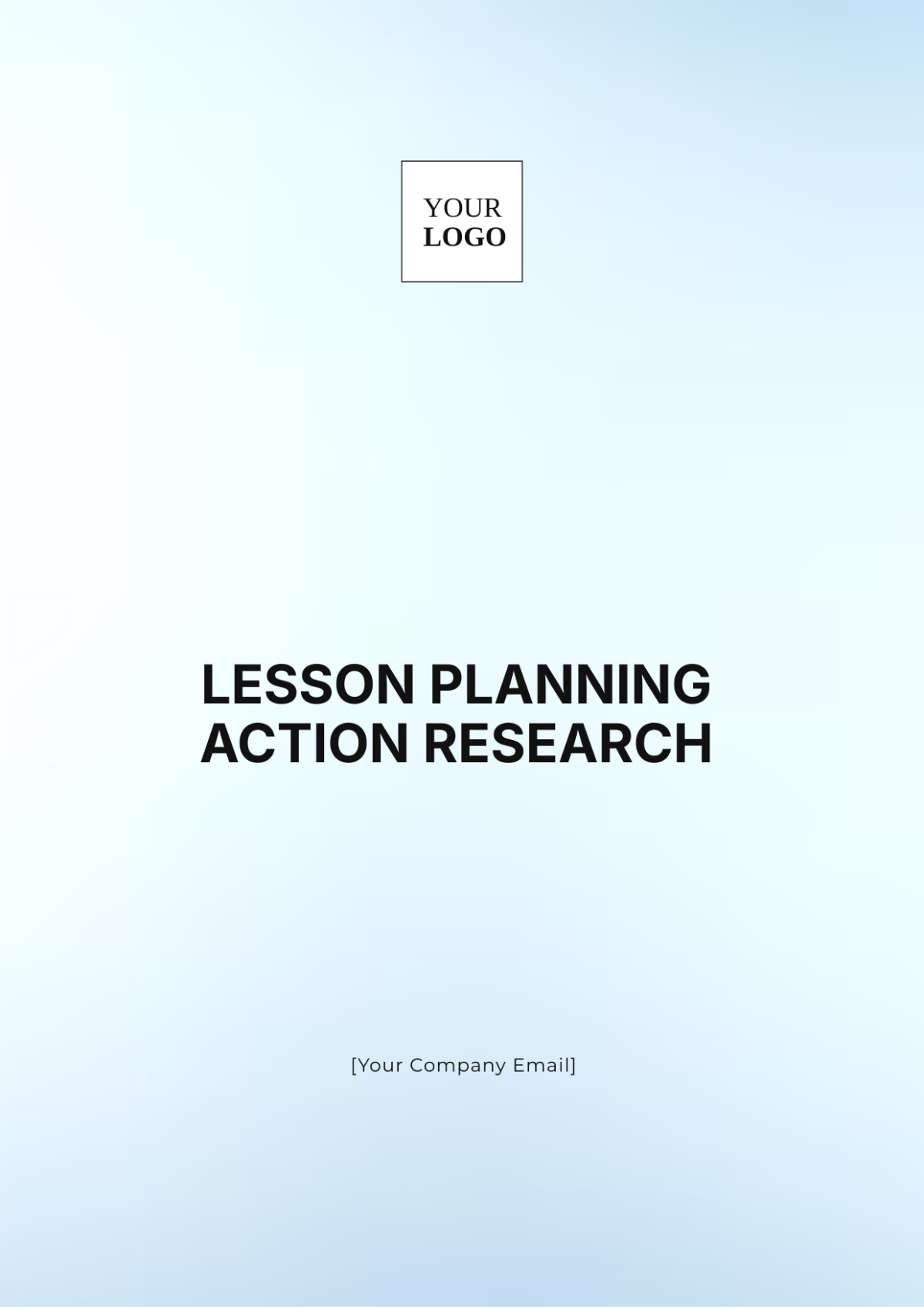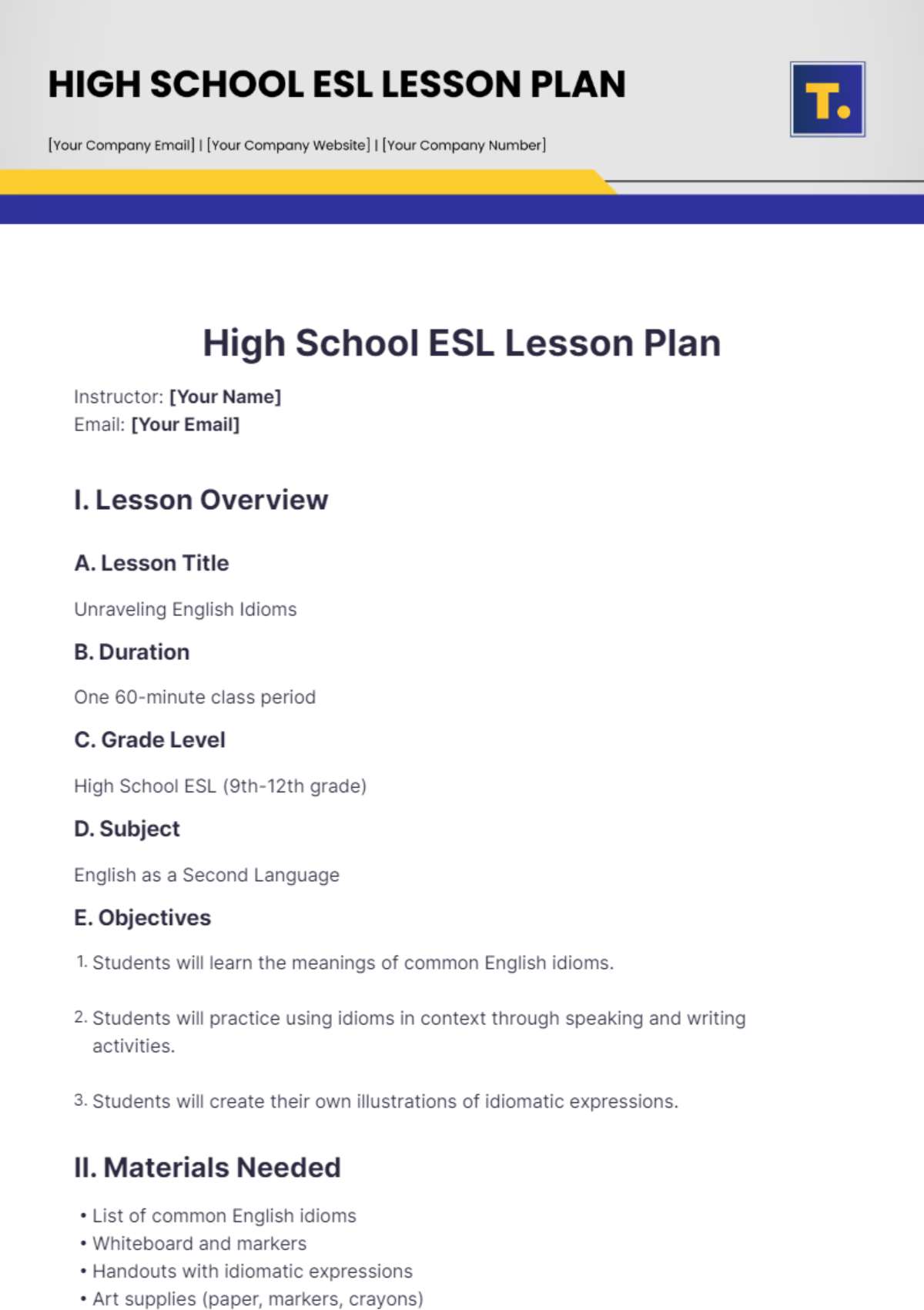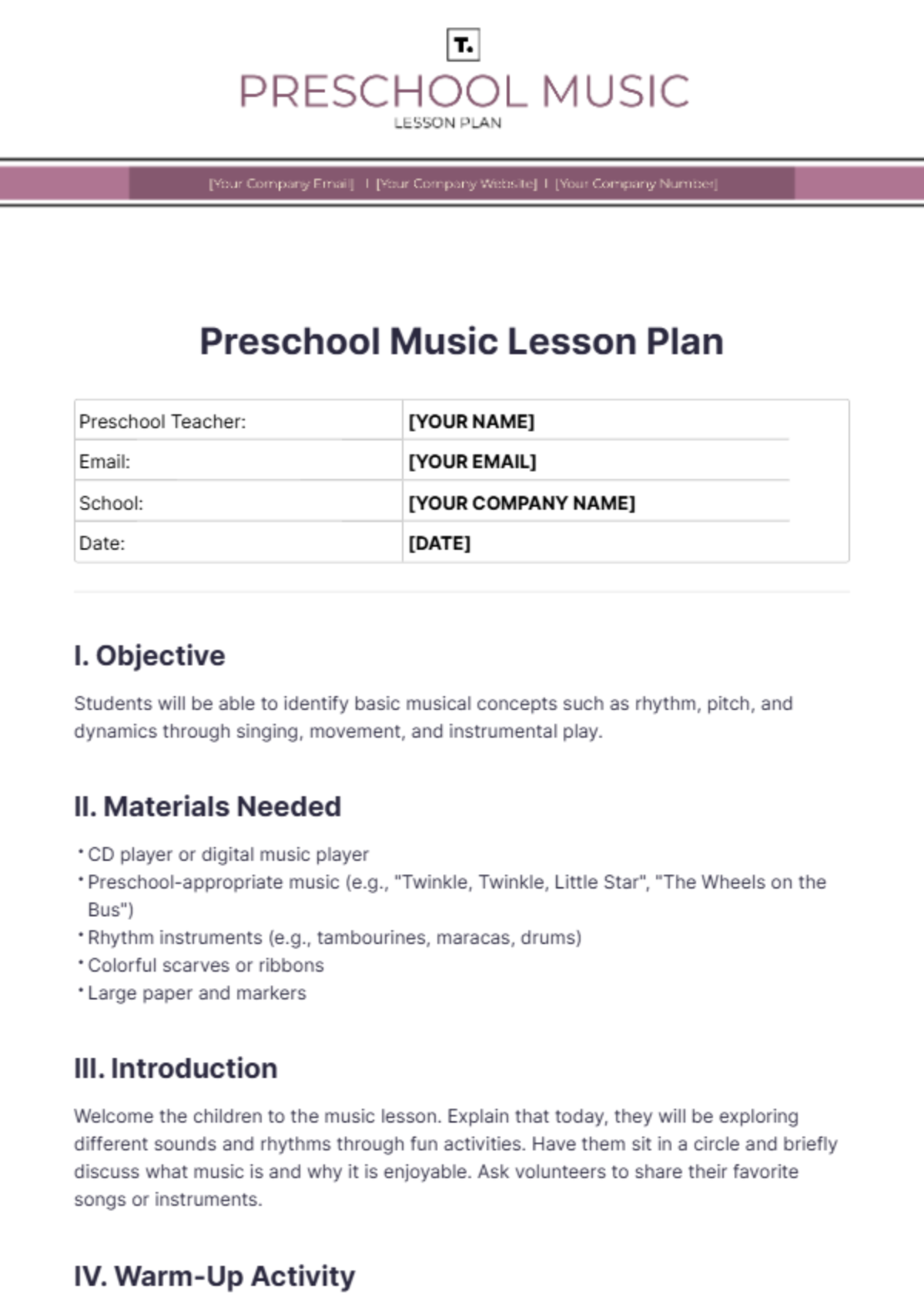Reteaching Lesson Plan
I. Lesson Overview
Instructor | [YOUR NAME] |
|---|---|
[YOUR EMAIL] | |
Organization | [YOUR COMPANY NAME] |
Date | May 20, 2050 |
Subject | Mathematics |
II. Objectives
Identify and address misconceptions related to adding and subtracting fractions.
Provide additional practice opportunities for students to reinforce understanding.
Ensure all students achieve mastery of fraction operations.
III. Materials
Materials | Description |
|---|---|
Whiteboard and markers | For instructional purposes and problem-solving |
Printed worksheets | Containing various fraction problems |
Fraction manipulatives | (if available) such as fraction bars or circles |
Individual whiteboards | For individual practice and demonstration |
Markers | For use with individual whiteboards (optional) |
IV. Warm-Up (10 minutes)
[YOUR NAME] begins the lesson by engaging students with a quick review of fraction addition and subtraction.
Students are asked to solve a few simple fraction problems either individually or in pairs.
[YOUR NAME] facilitates a brief discussion, highlighting common errors or misunderstandings observed during the warm-up activity.
V. Identification of Misconceptions (15 minutes)
[YOUR NAME] presents students with a set of more challenging fraction problems, incorporating real-world scenarios where fractions are used.
She circulates the room, observing students' problem-solving approaches and noting any common misconceptions or areas of difficulty.
Misconceptions are identified through student discussions and responses to the problems presented.
VI. Mini-Lesson: Addressing Misconceptions (15 minutes)
[YOUR NAME] leads a mini-lesson where she reviews the identified misconceptions with the class.
Using the whiteboard and manipulatives, she models correct problem-solving strategies, emphasizing key concepts such as finding common denominators and simplifying fractions.
Clear explanations and examples are provided to clarify misunderstandings and reinforce correct procedures.
VII. Guided Practice (15 minutes)
Problem Set | Description |
|---|---|
Worksheet | Contains practice problems addressing misconceptions |
Whiteboard and markers | For demonstrating problem-solving strategies |
Fraction manipulatives | For a hands-on exploration of fraction concepts |
Individual assistance | Provided by the instructor as needed |
VIII. Independent Practice (10 minutes)
The remaining problems on the worksheet are assigned for students to complete independently.
Students are encouraged to use the strategies discussed during the mini-lesson and guided practice.
[YOUR NAME] circulates the room to monitor progress and provide assistance as needed.
IX. Closure (5 minutes)
[YOUR NAME] reviews key concepts and problem-solving strategies covered in the lesson.
She emphasizes the importance of understanding fractions for future mathematical success and everyday applications.
[YOUR NAME] previews upcoming lessons or topics related to fractions to maintain student engagement and interest.
X. Assessment
Assessment Tools | Description |
|---|---|
Completed worksheets | Collected to gauge understanding of fraction operations |
Observations | Recorded during the lesson to inform future instruction |
Student responses | Used to identify remaining misconceptions |
Progress monitoring | Allows for adjustments in future reteaching sessions |
XI. Reflection
[YOUR NAME] reflects on the effectiveness of the lesson in addressing learning gaps and misconceptions.
She considers adjustments or modifications for future reteaching sessions based on student responses and progress.
Additional interventions or support are planned as needed for individual students to ensure mastery of fraction operations.
